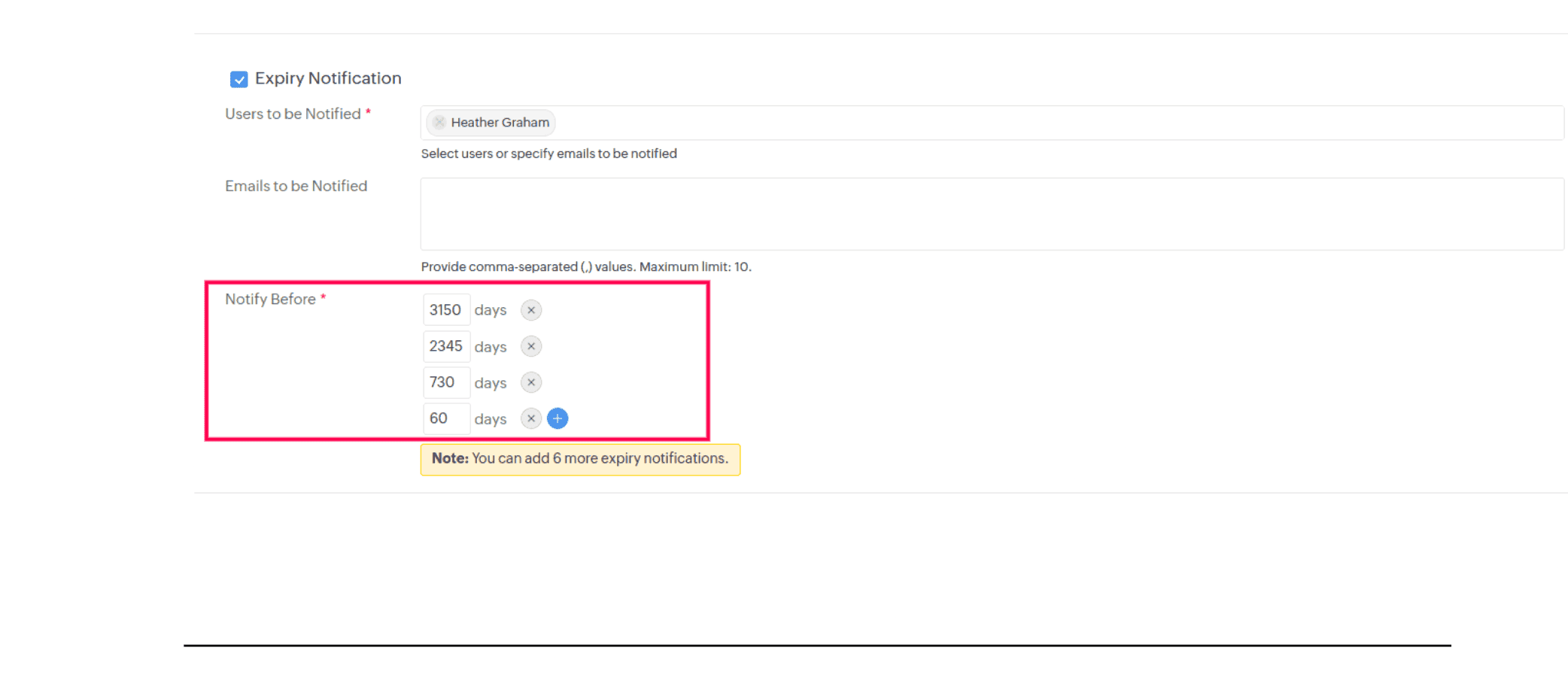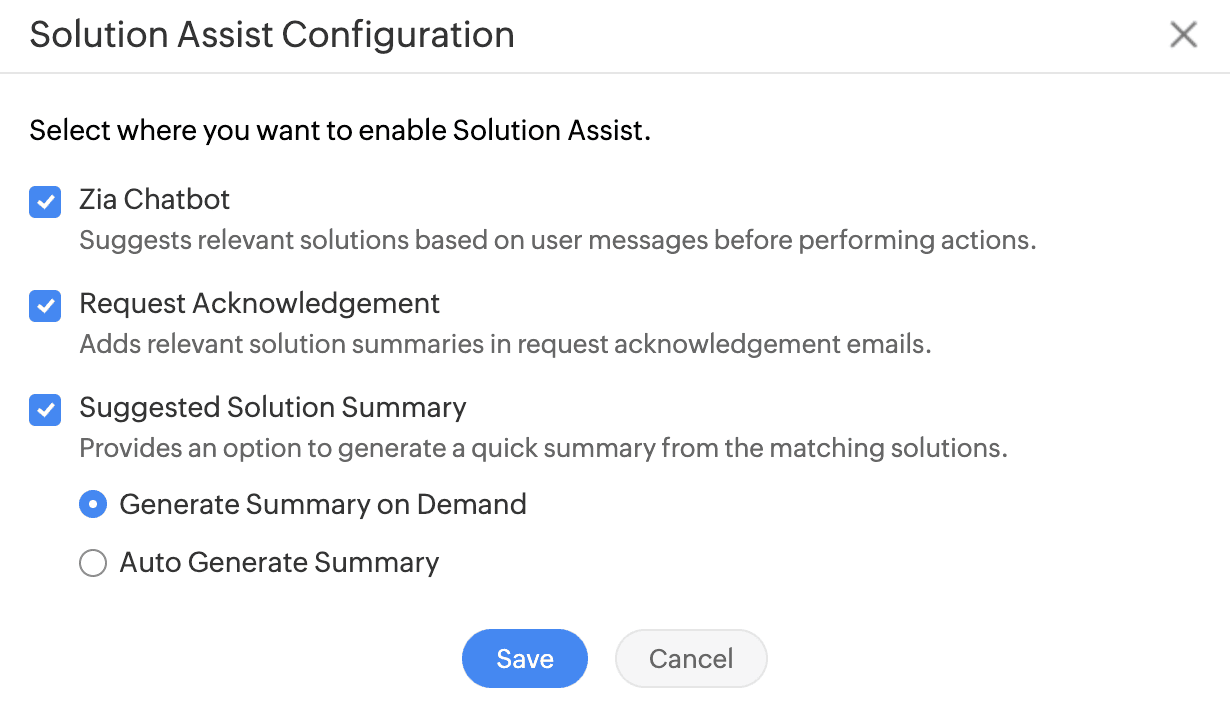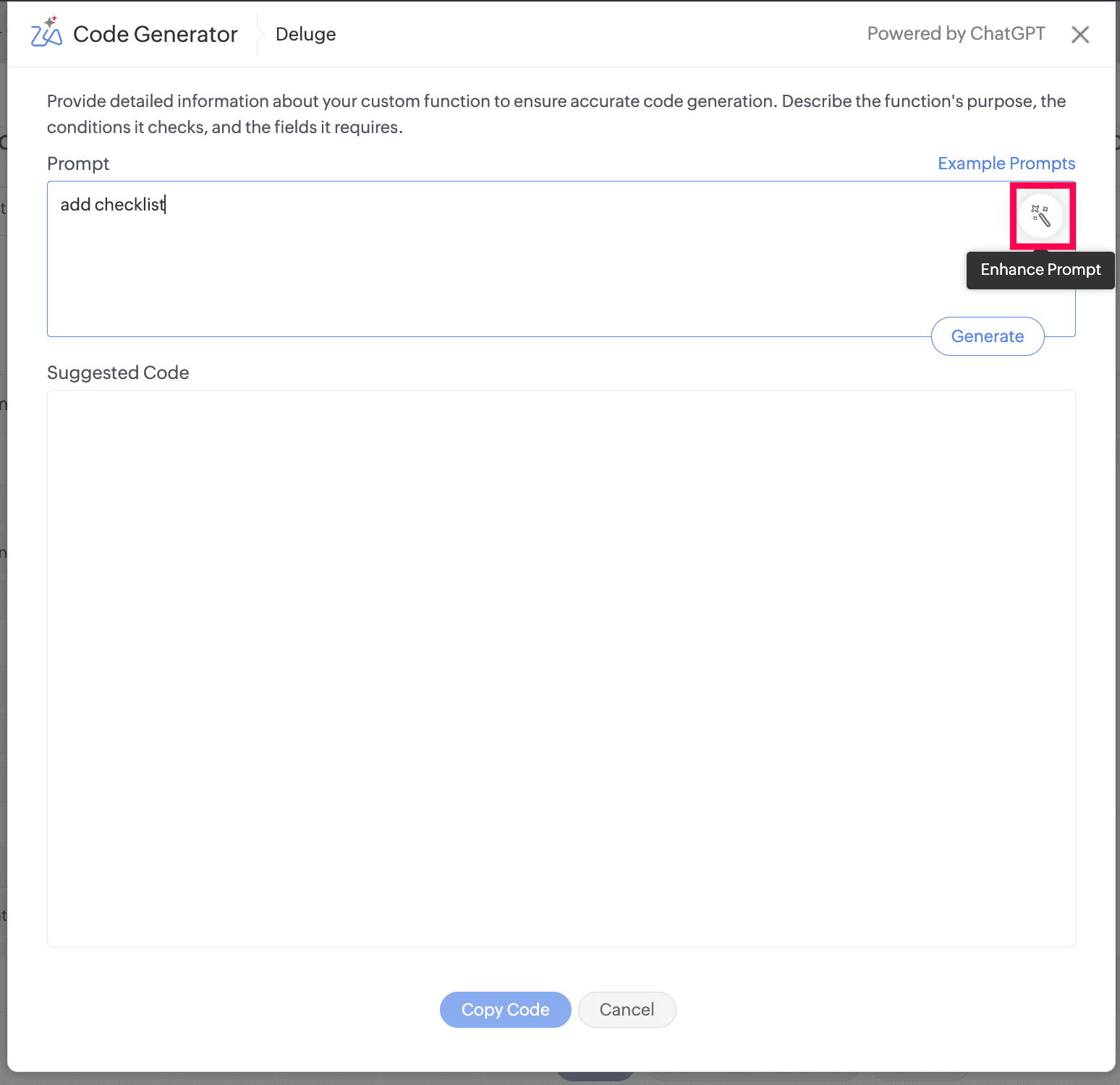Dedicated Finance Help Desk Instance
We are now introducing a dedicated Finance instance, designed to manage and streamline finance-related activities within the help desk.
- New requester portal templates tailored for financial services.
- Predefined categories, subcategories, and items aligned with core financial operations such as reimbursements, payroll, invoicing, and procurement.
- Prebuilt templates created for financial incidents and service requests.
- Finance-specific technician groups
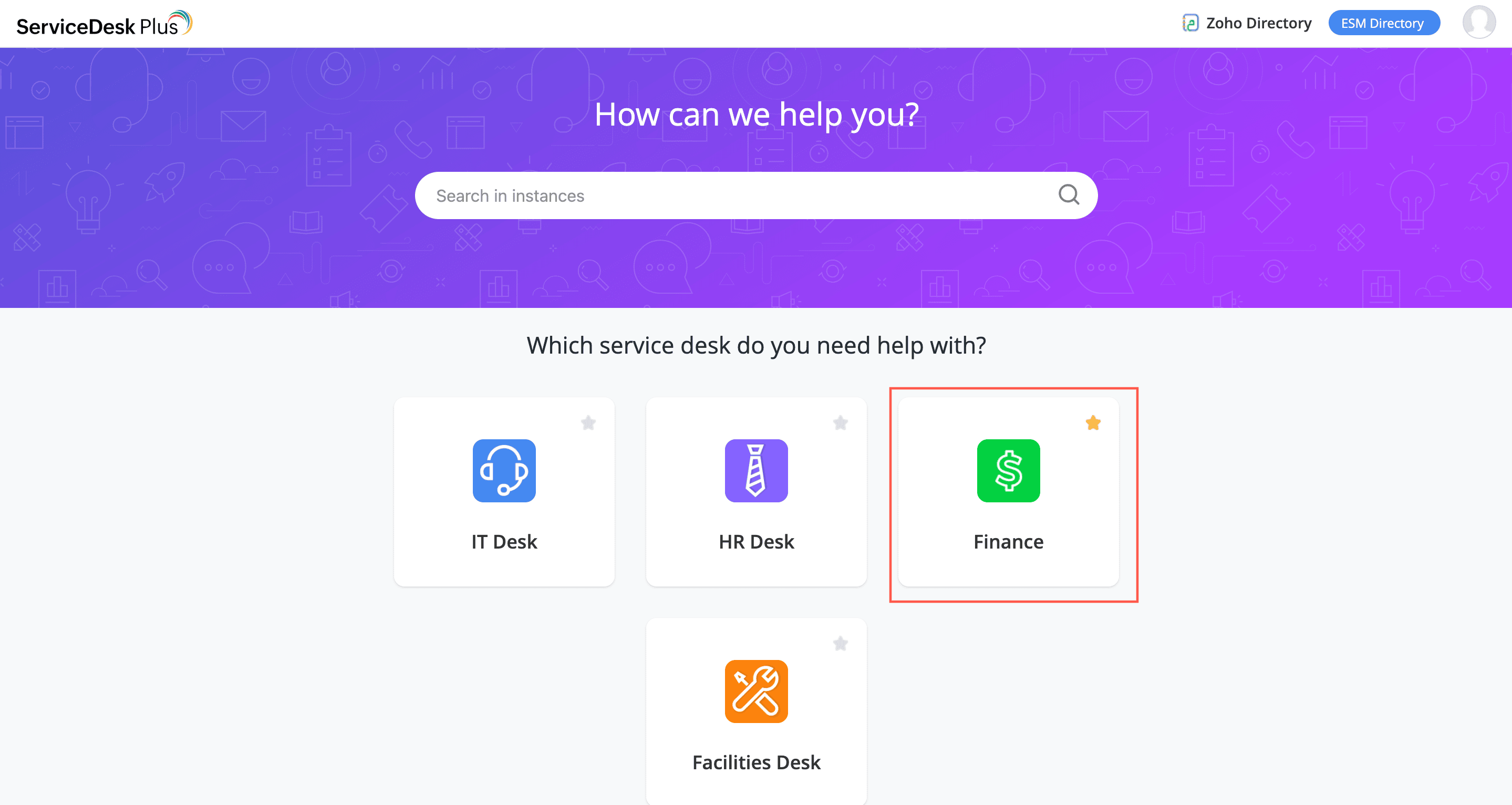
Setup
Custom Widgets for Projects
- Custom widgets are now supported in Projects. You can add custom widgets to the project details right pane and project details tab.
- Configure project custom widgets under Setup > Developer Space > Custom Widgets.
- Set the display location of project custom widgets by expanding the widget name and enabling the toggle against the preferred location.
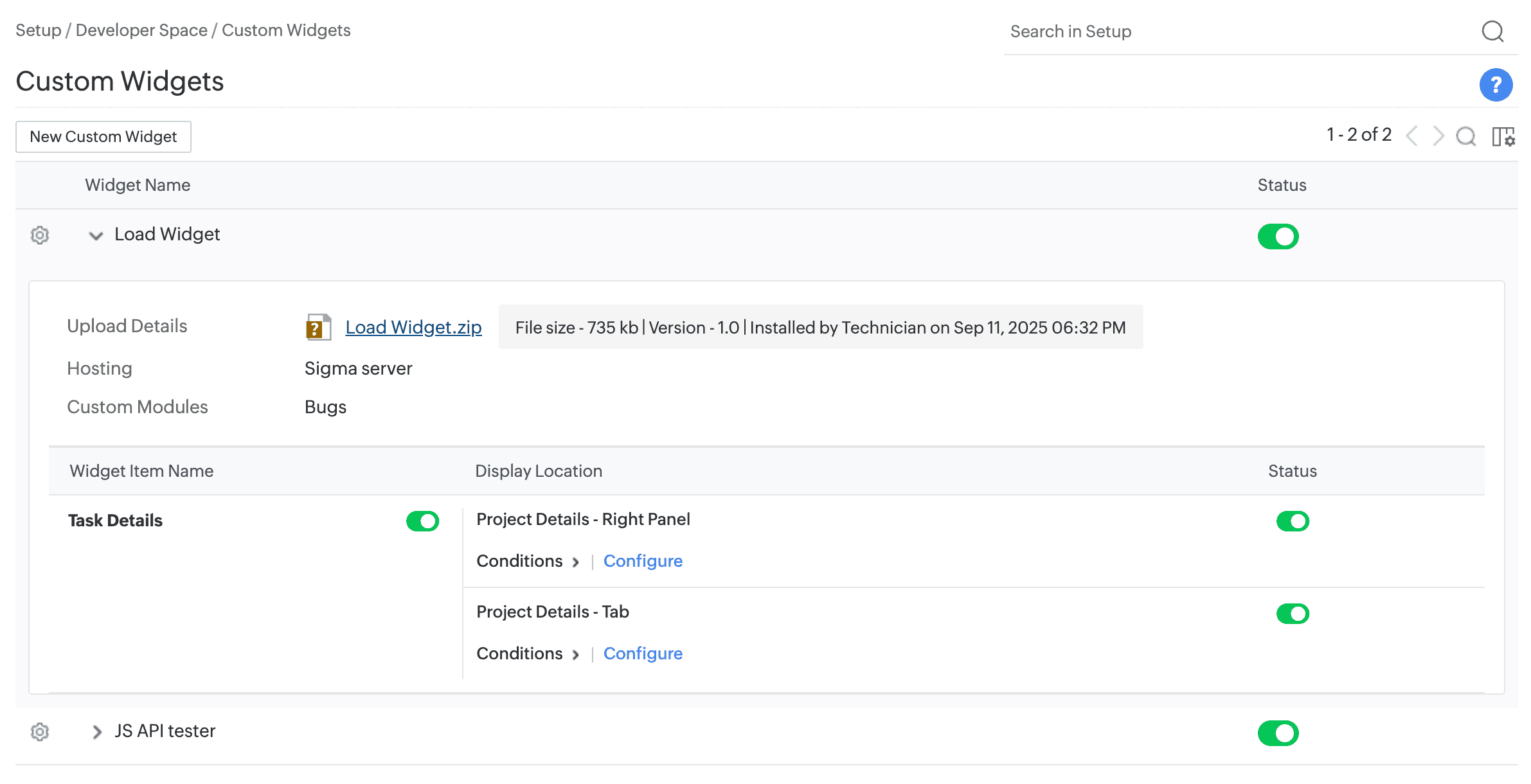
Vendor Additional Fields
- Under Setup > Customization > Additional Fields > Vendor, SDAdmin and technicians with vendor configuration privileges can now add or edit additional fields for Vendor.
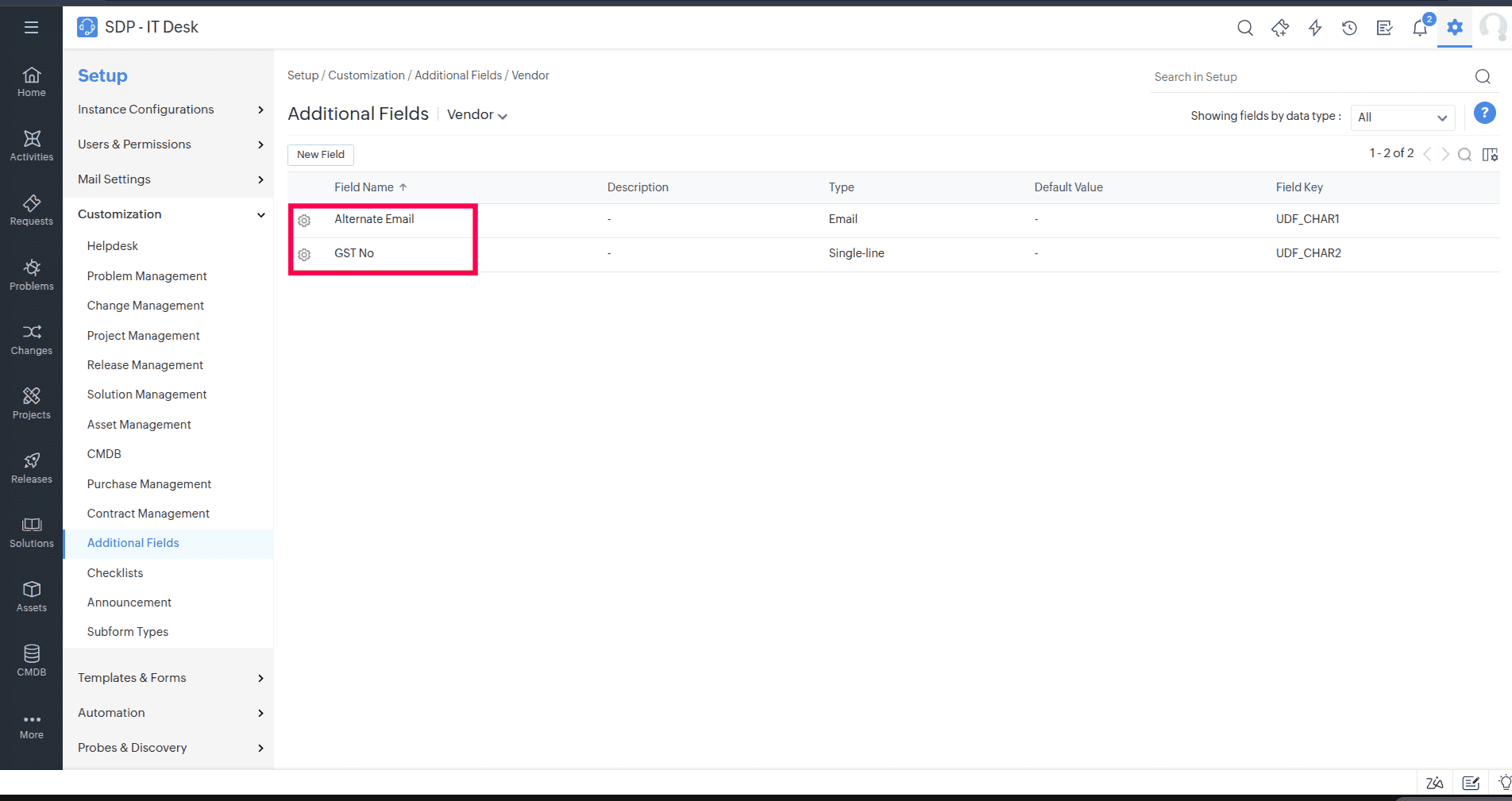
- Supported Field Types: Single-line, Multi-line, Numeric, Pick List, Multi-Select, Date/Time, Email, Phone, Currency, Decimal, Percent, Web URL, Check Box, Radio Button, and Decision Box.
- These additional fields will be displayed in the vendor add or edit form and in the right pane of purchase and contract details pages.
- You can now import or export additional vendor fields through Setup > Data Administration > Import/Export Data.
- In Purchases, Contracts, and Assets, the vendor pop-up is displayed in a two-column format.
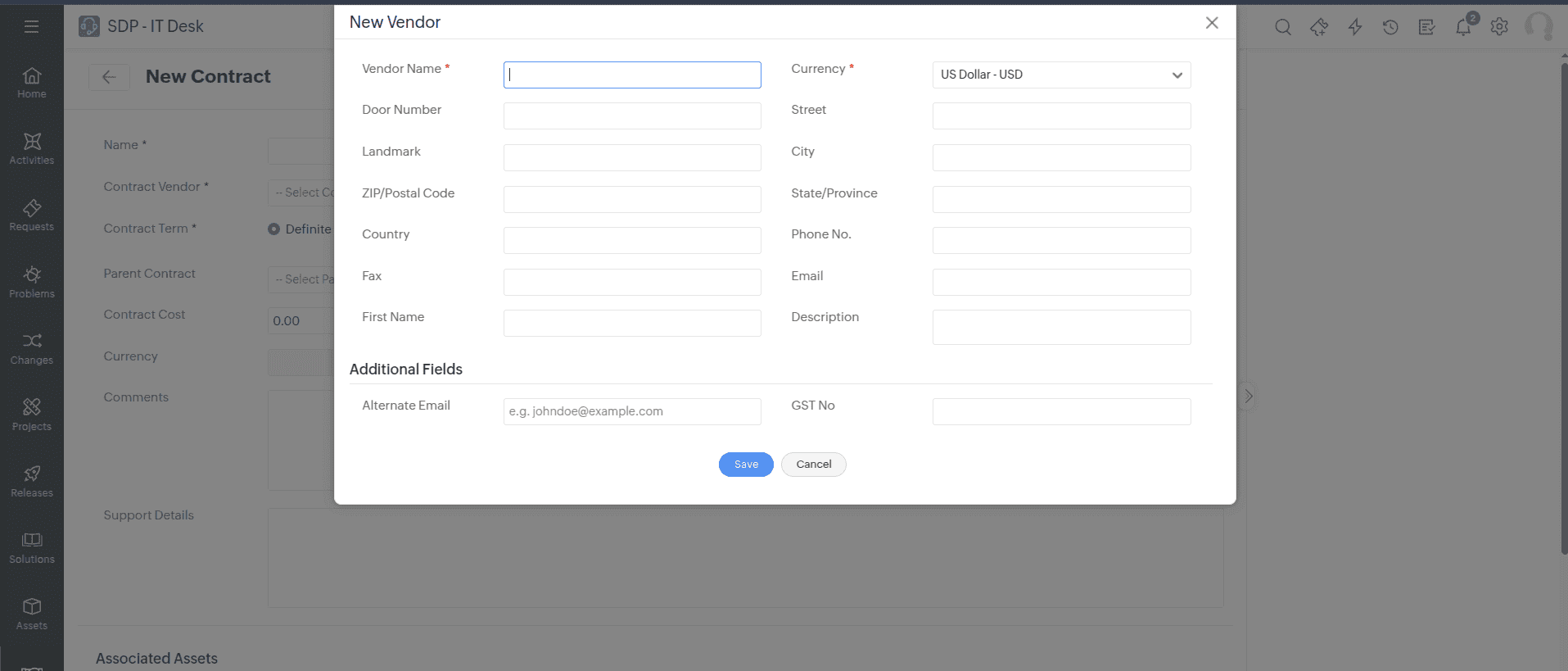
Enable/Disable Product
- SDAdmin and technicians with product configuration privileges can now restrict the visibility of products in purchase orders via the Product Visibility option under Setup > Customization > Asset Management > Product.
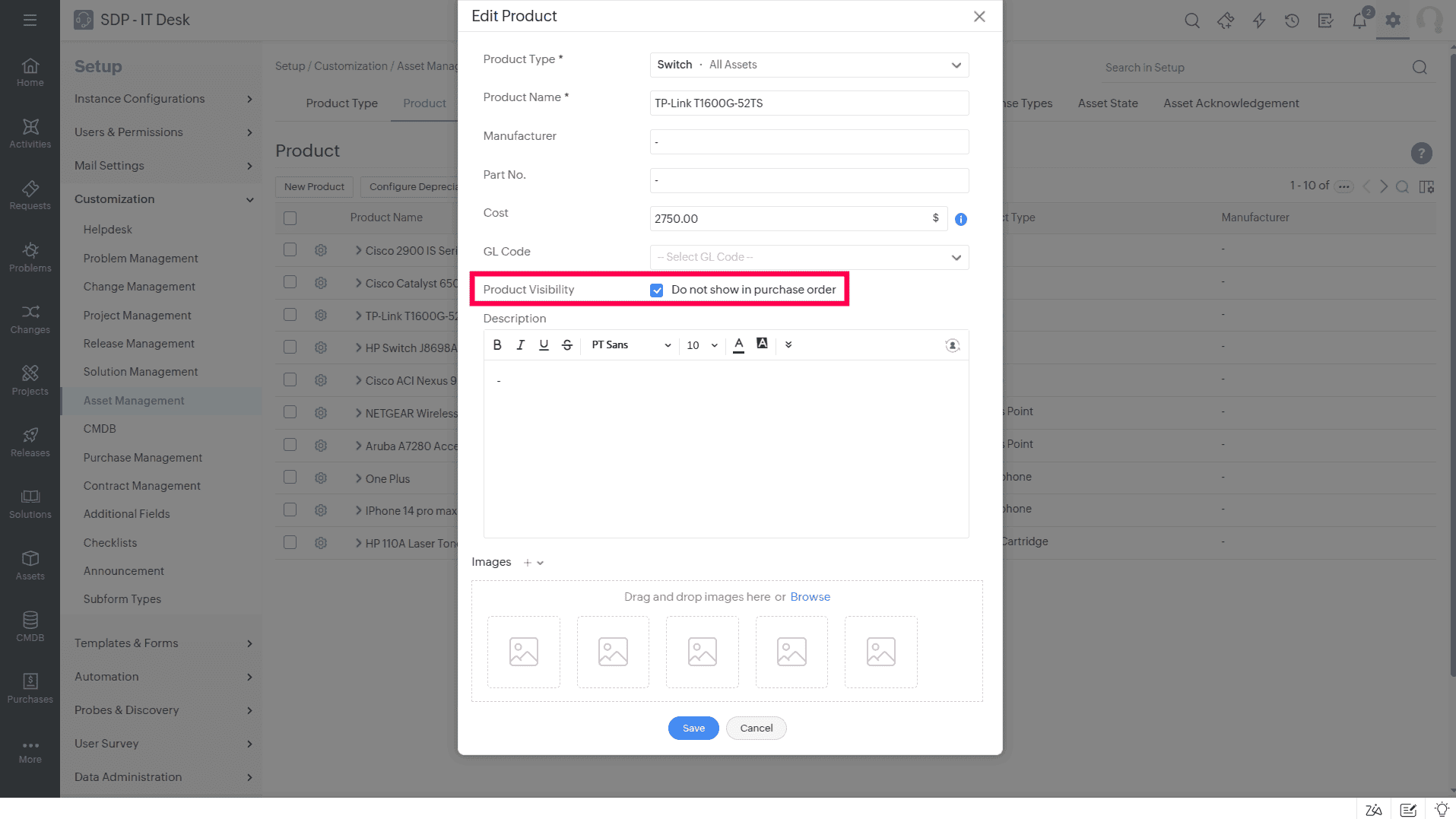
- Products marked as Do not show in purchase order will not be listed under the Products drop-down on the New Purchase Order page.
Enable/Disable Vendor
- SDAdmin and technicians with vendor configuration privileges can now enable or disable vendors under Setup > Customization > Asset Management > Vendor.
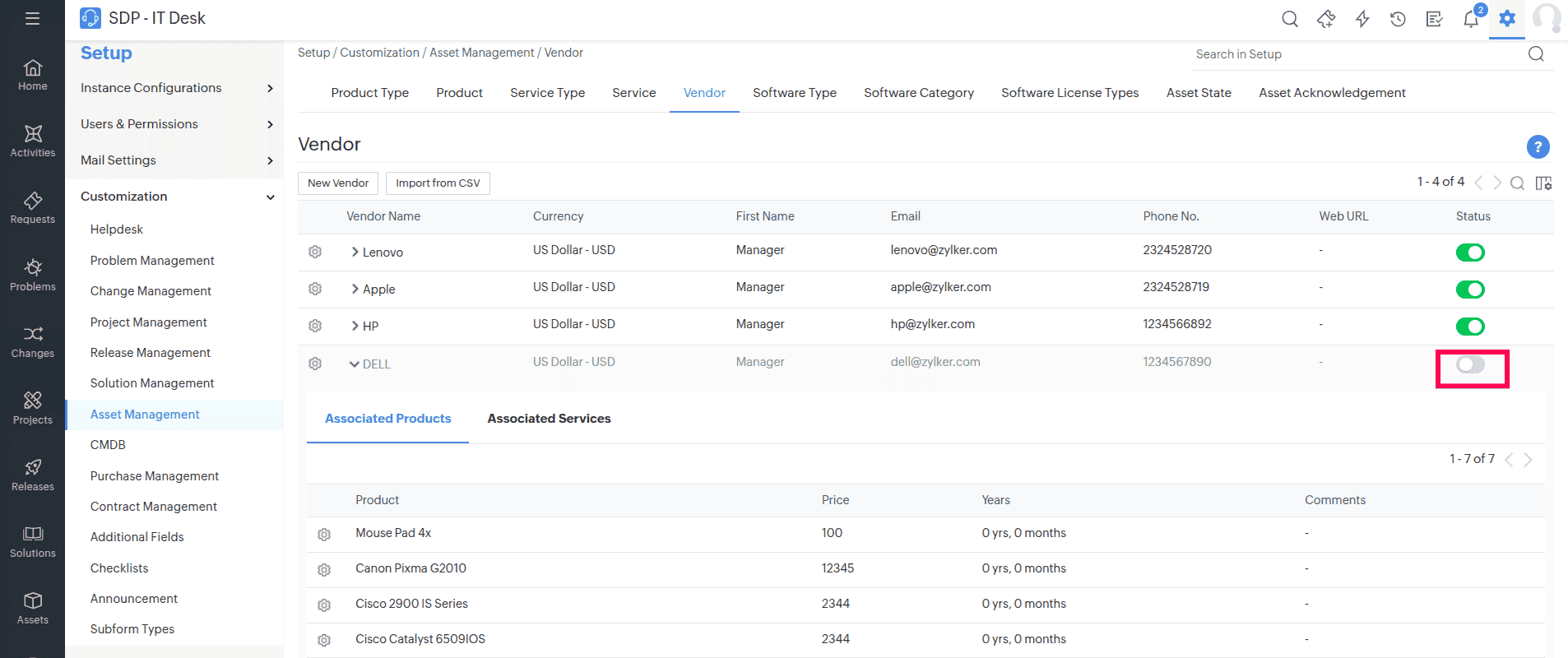
- Disabled vendors will be marked as Inactive in Purchases, Contracts, and Assets.
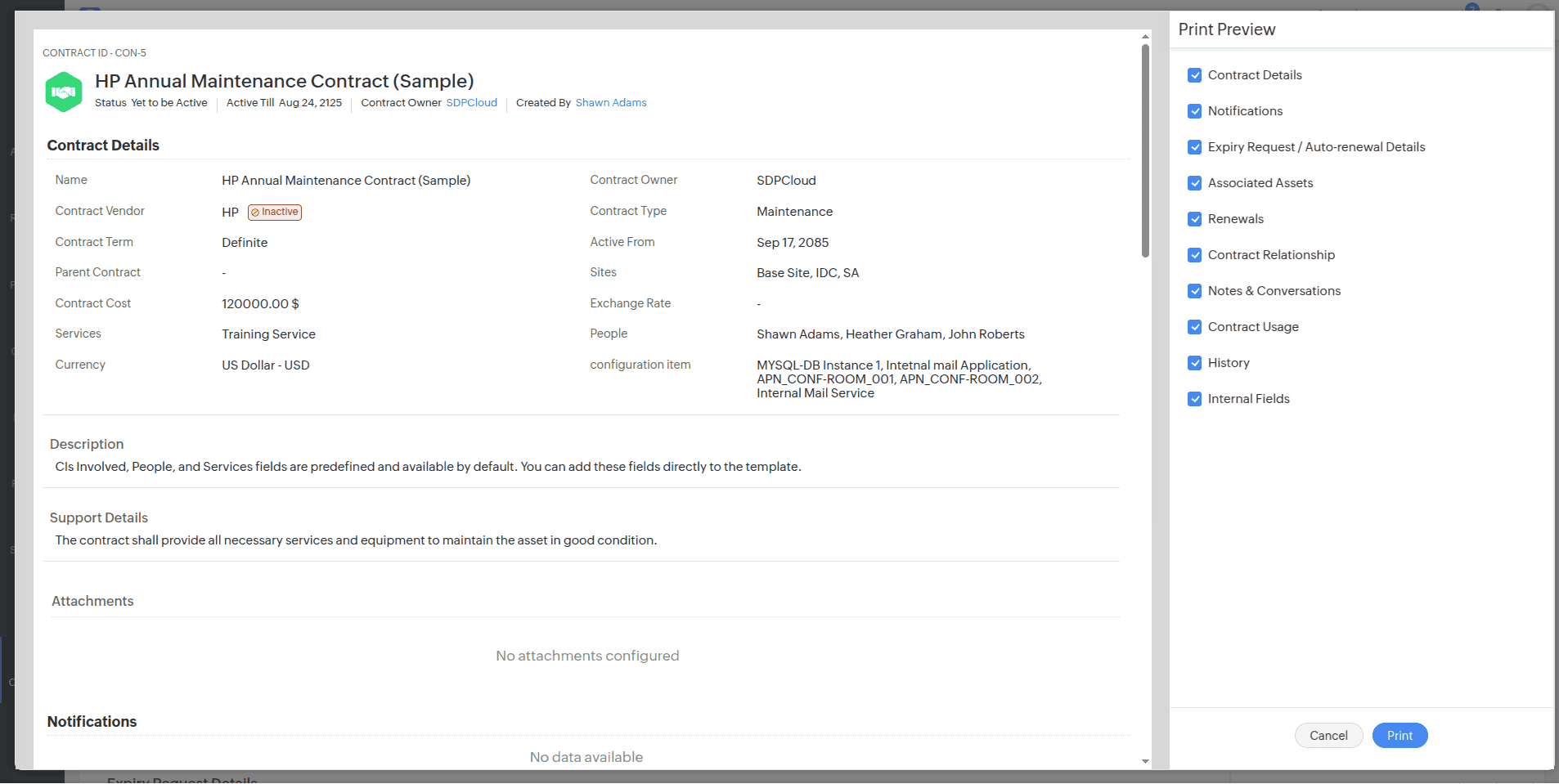
Limitations
Vendor
- Inactive vendors cannot be associated with products and services and will not be listed in the vendor drop-down when creating a new purchase order, contract, or asset.
Purchases
- For purchases associated with inactive vendors, the Duplicate Purchase Order option will not appear in the Actions drop-down on the Purchase Order details page.
- Products and services associated with an inactive vendor cannot be received in purchase orders.
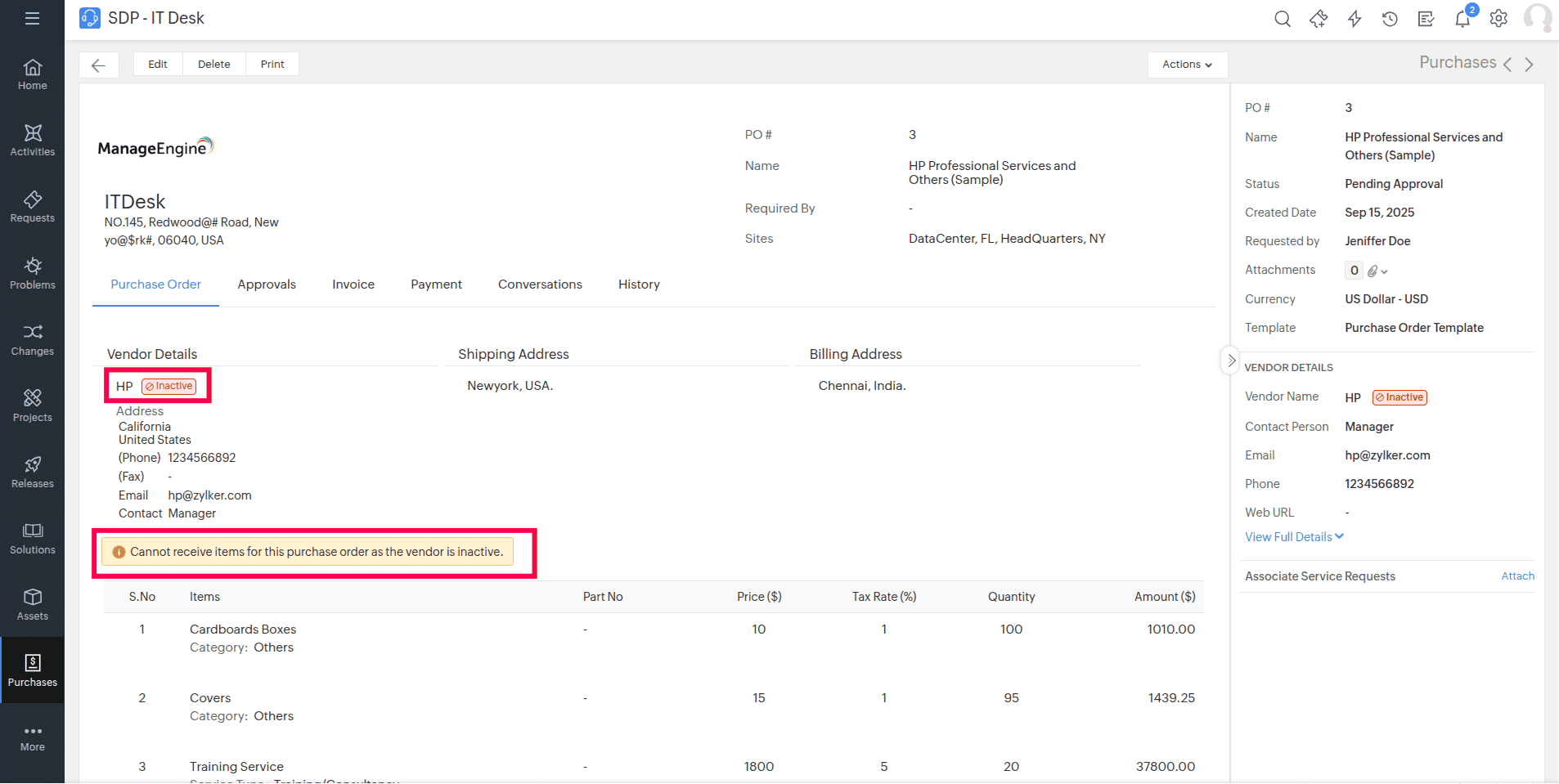
Contracts
- Contracts linked to inactive vendors cannot be auto-renewed or manually renewed.
Assets
- For consumables associated with inactive vendors, adding or modifying the Received Quantity and Purchase Cost is now restricted.
Purchase Timer Action for Trigger
- Use Purchase Timer Action to plan automated actions in purchases within a specific time frame and execute time-delayed actions through custom triggers.
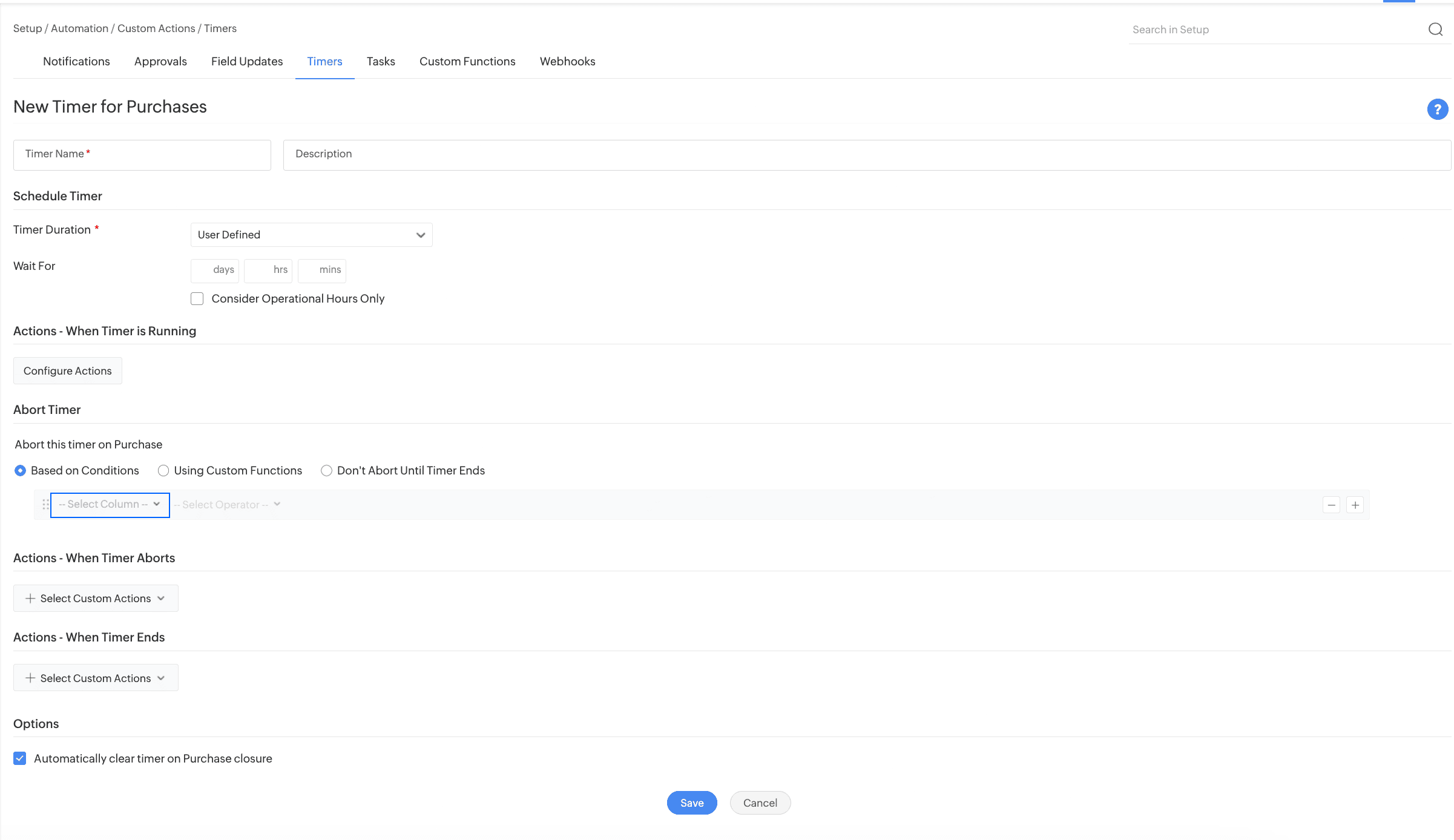
Contract Timer Action for Trigger
- Use Contract Timer Action to plan automated actions in contracts within a specific time frame and execute time-delayed actions through custom triggers.
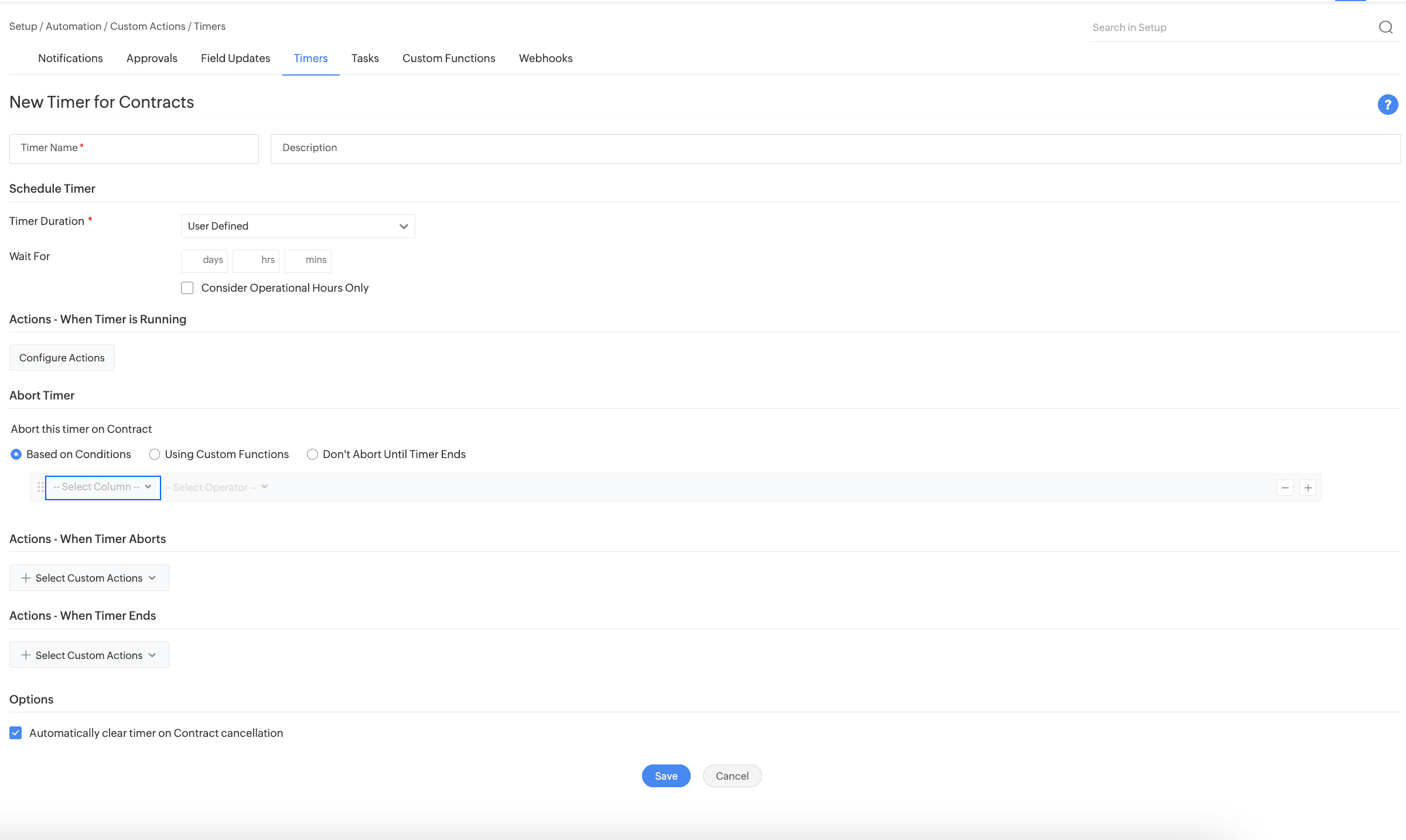
Purchase/Contract Users in Notifications
- You can now select and notify purchase/contract users directly in the Notifications.
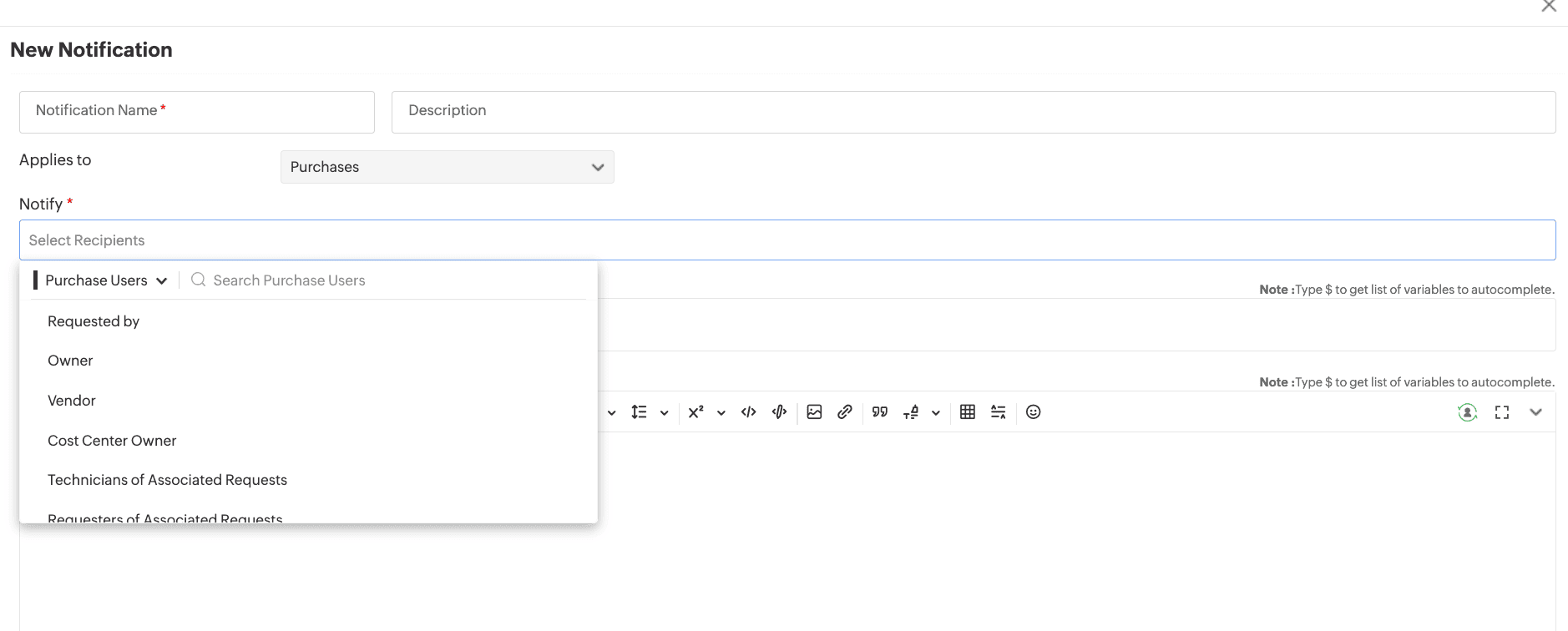
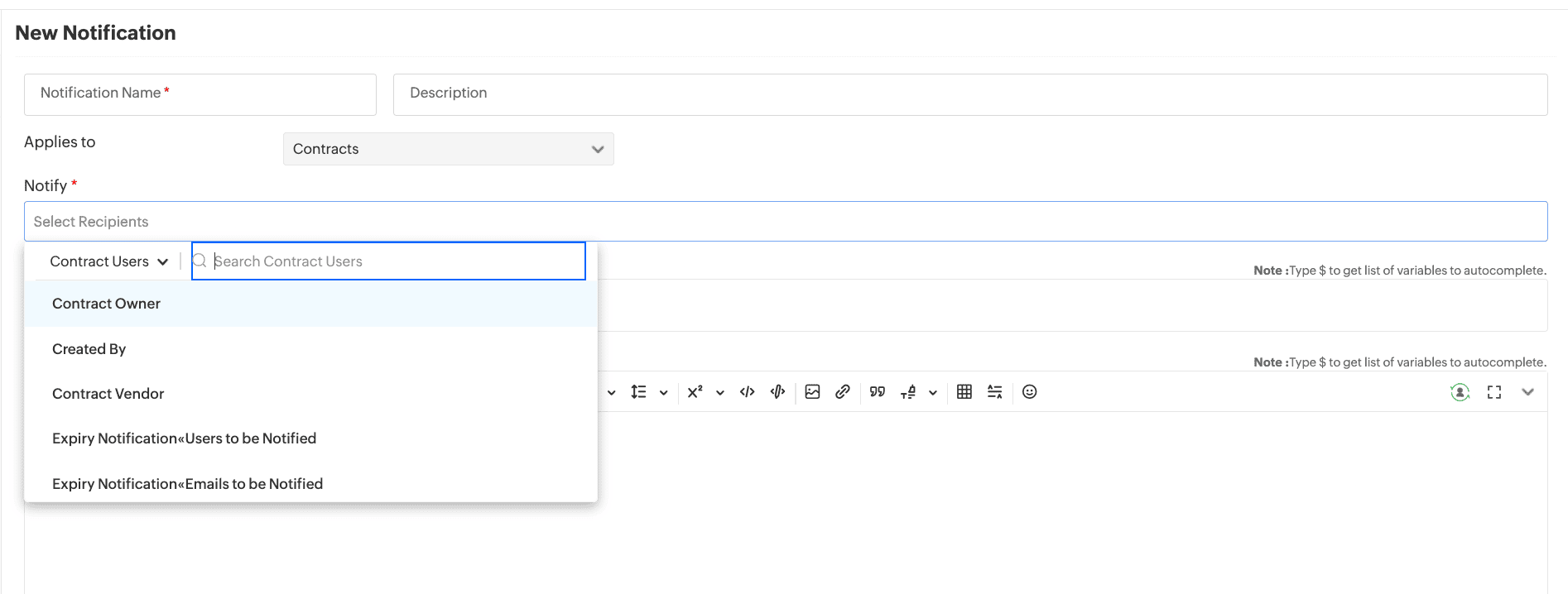
Triggers for Subentities of Purchases and Contracts
- You can now apply triggers to sub entities of purchases and contracts.
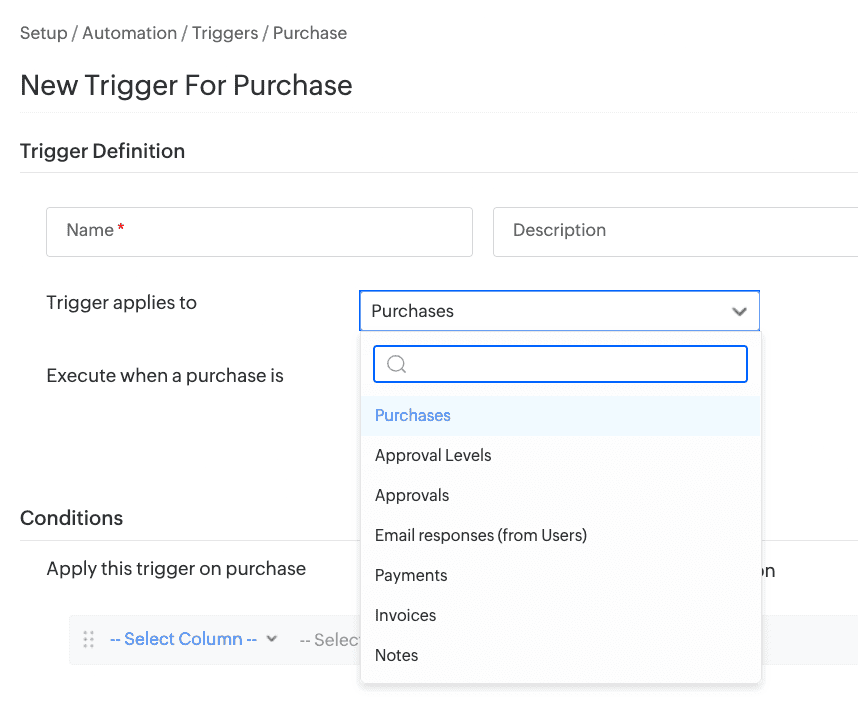
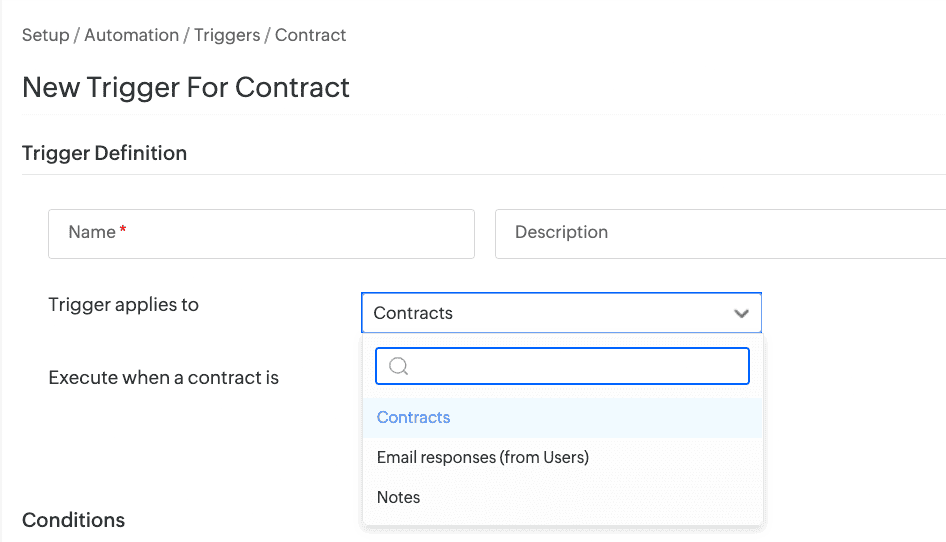
Releases
- Define criteria to grant access permissions for non-prominent roles, such as Development Head, QA Manager, and UAT Owner during role creation.
- Configure approval permissions for release roles. Two new release approval permissions have been added: Add or Edit Approvals and Delete approvals.
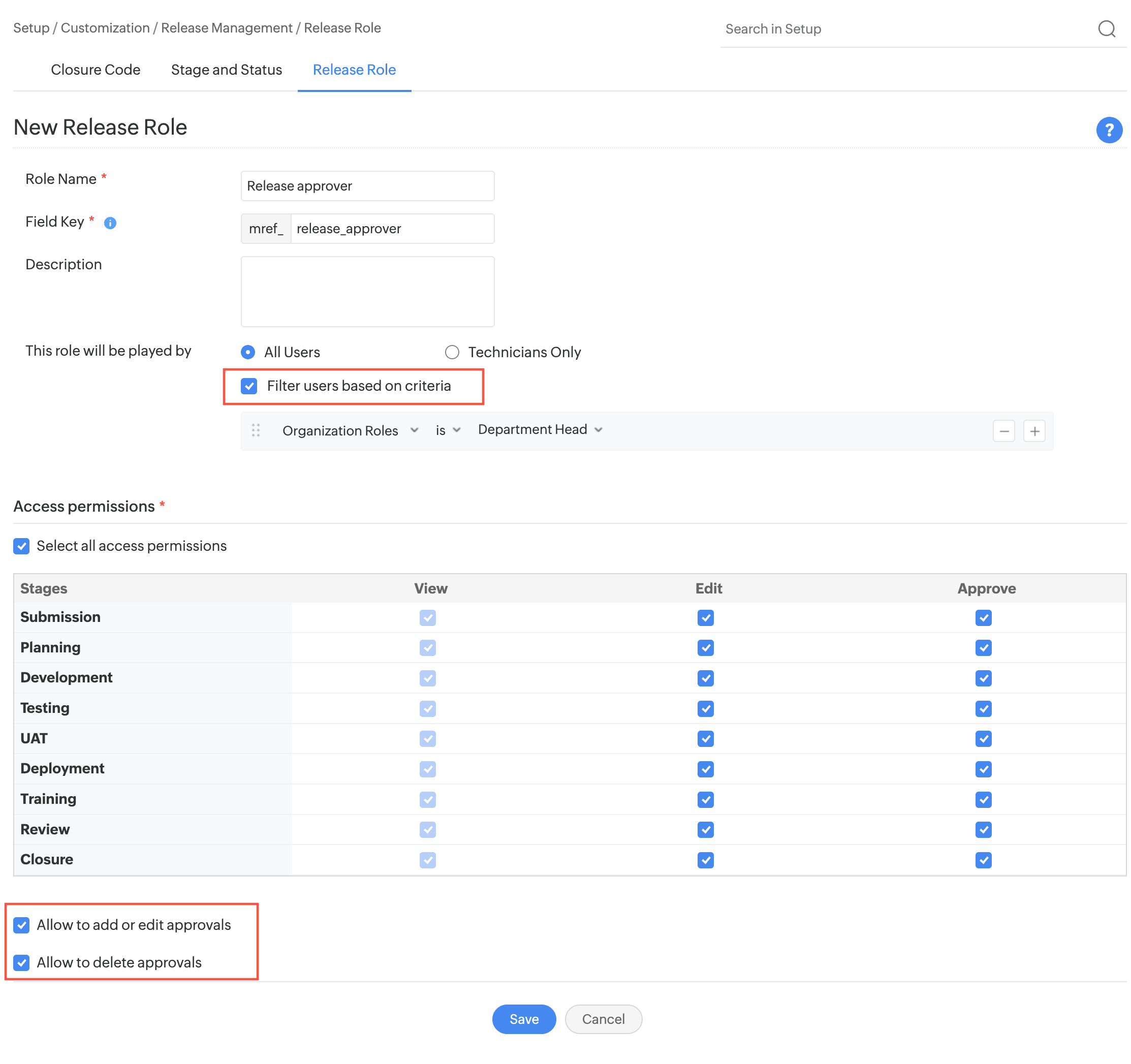
- Under Setup > Release Closure Rules > Stage approvals, select All Approvals Completed to move release requests to subsequent stages when all approvals within a stage are completed (Approved/Rejected).
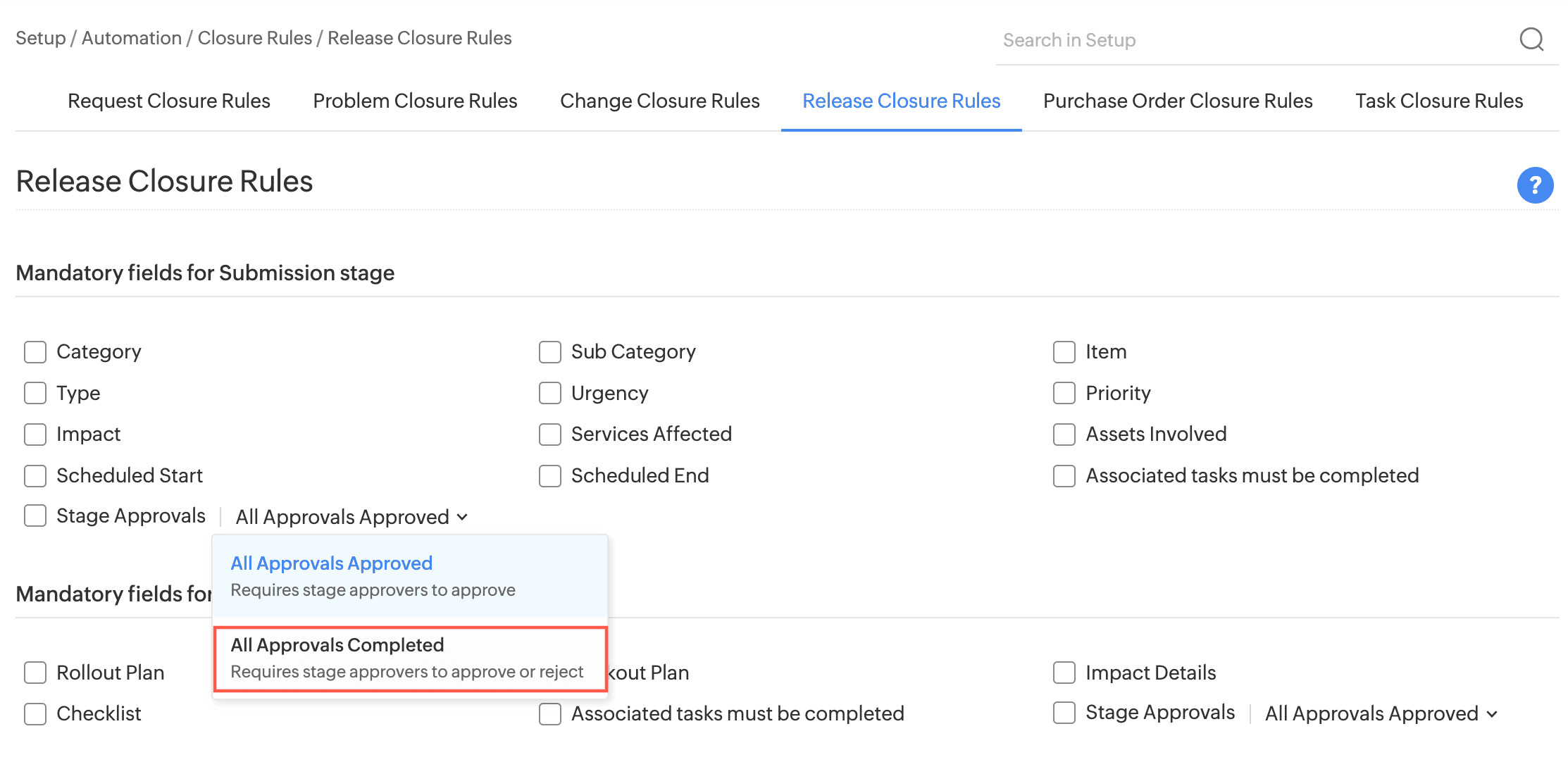
- Select predefined date ranges, such as Today, Tomorrow, This Week, Last Year, and more, from custom filters in release list view, grid view, calendar view, date fields in timer criteria, and date additional fields.
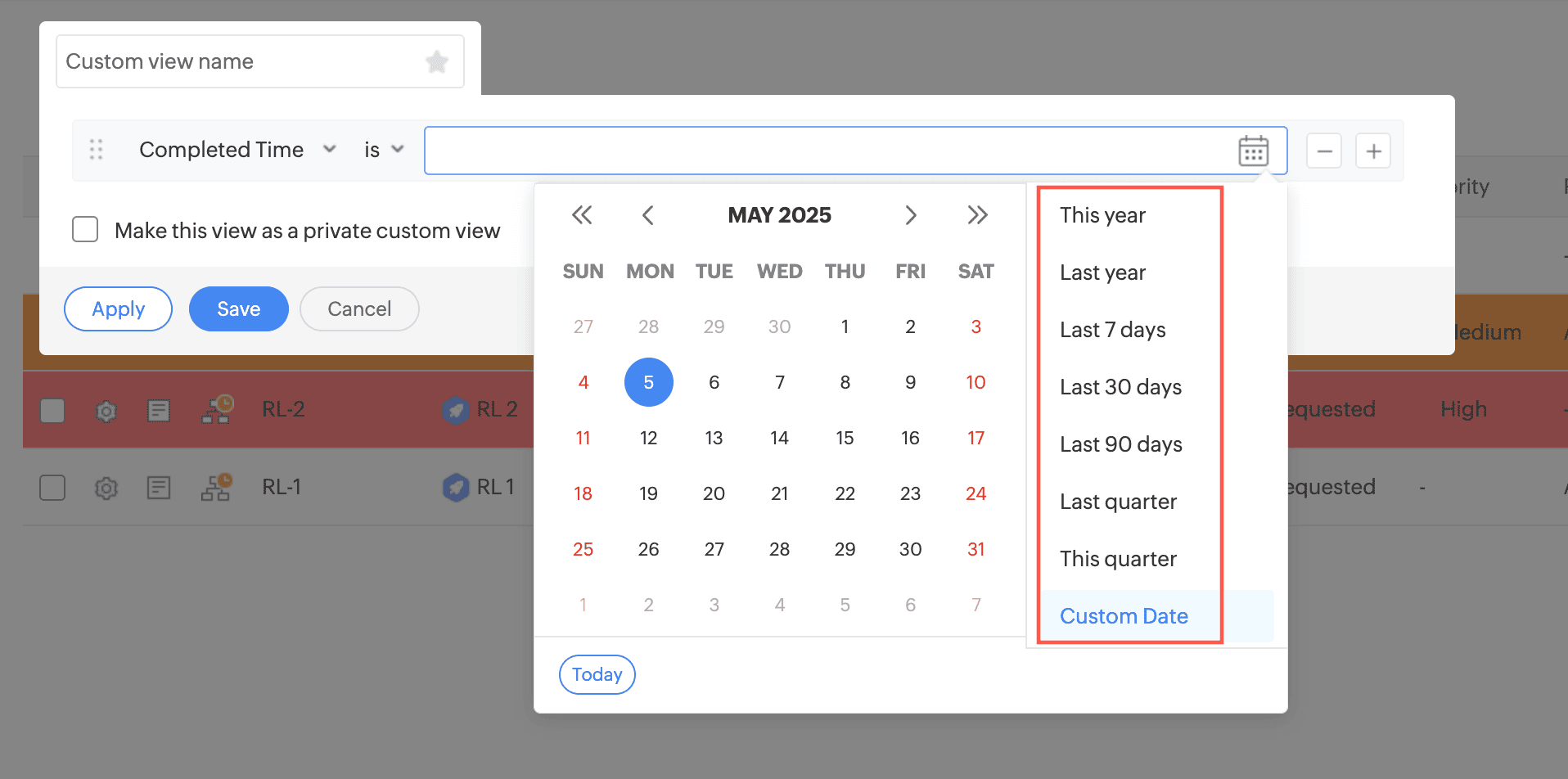
- In release notification forms, the Release Users and Roles filter is now split into Release Users and Release Roles.
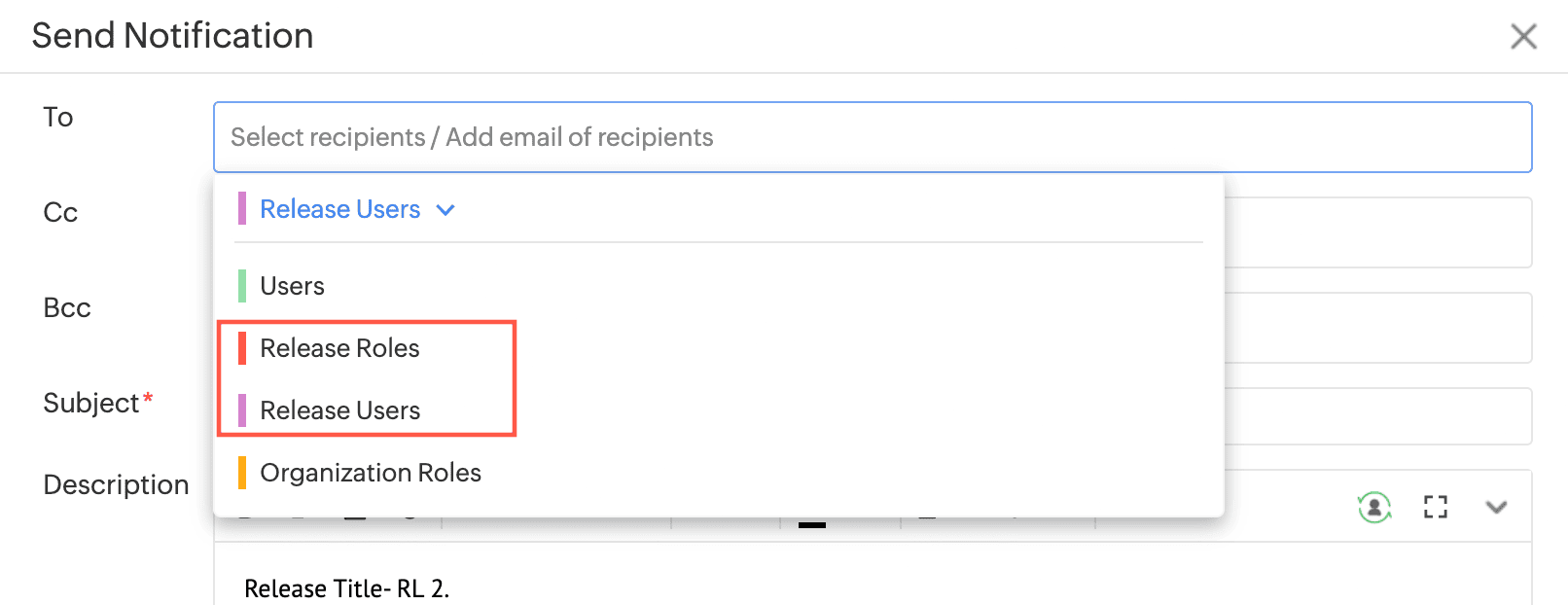
- Release Users will now include CMDB and Asset user fields.
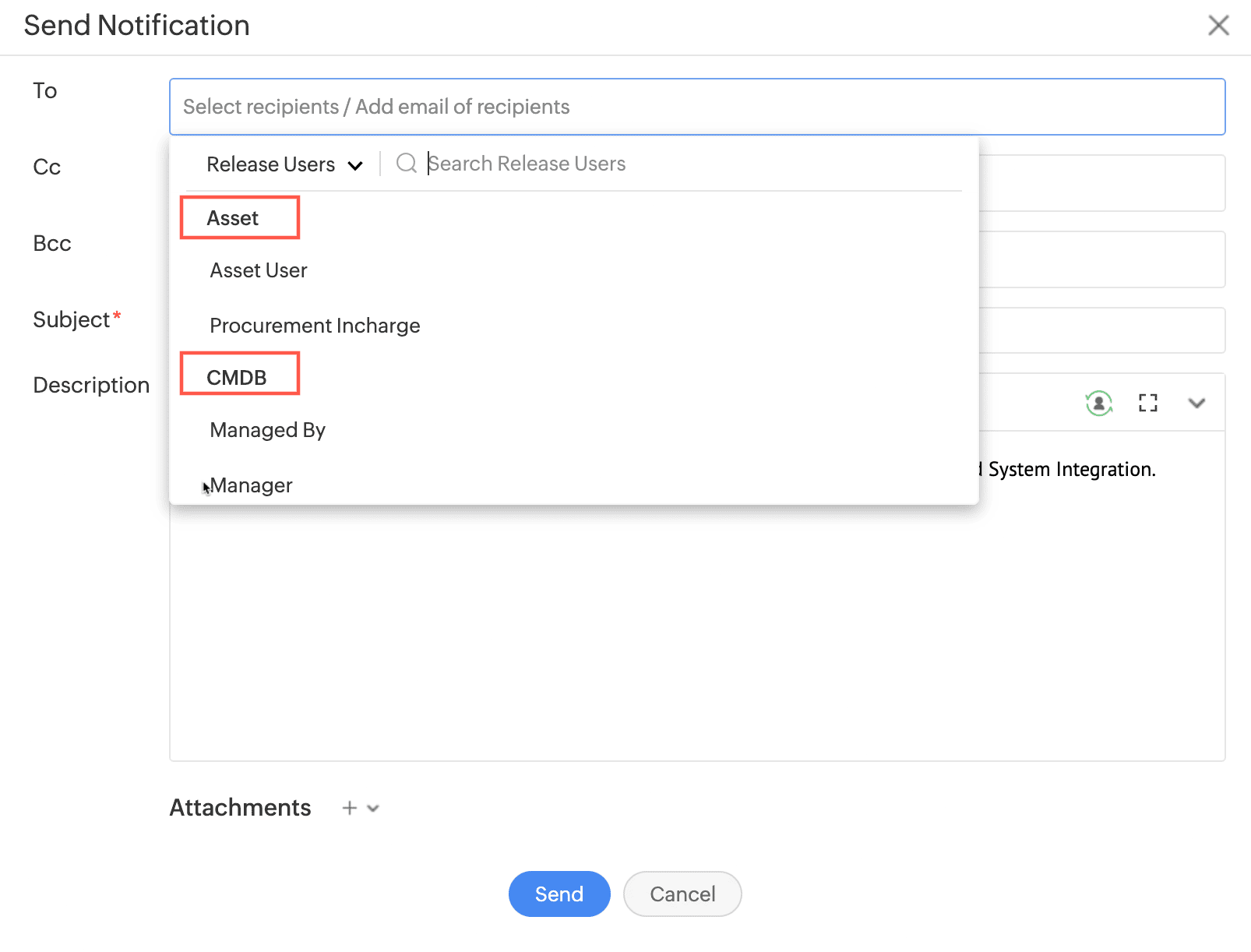
- In list view, the title tooltip now displays the release description.
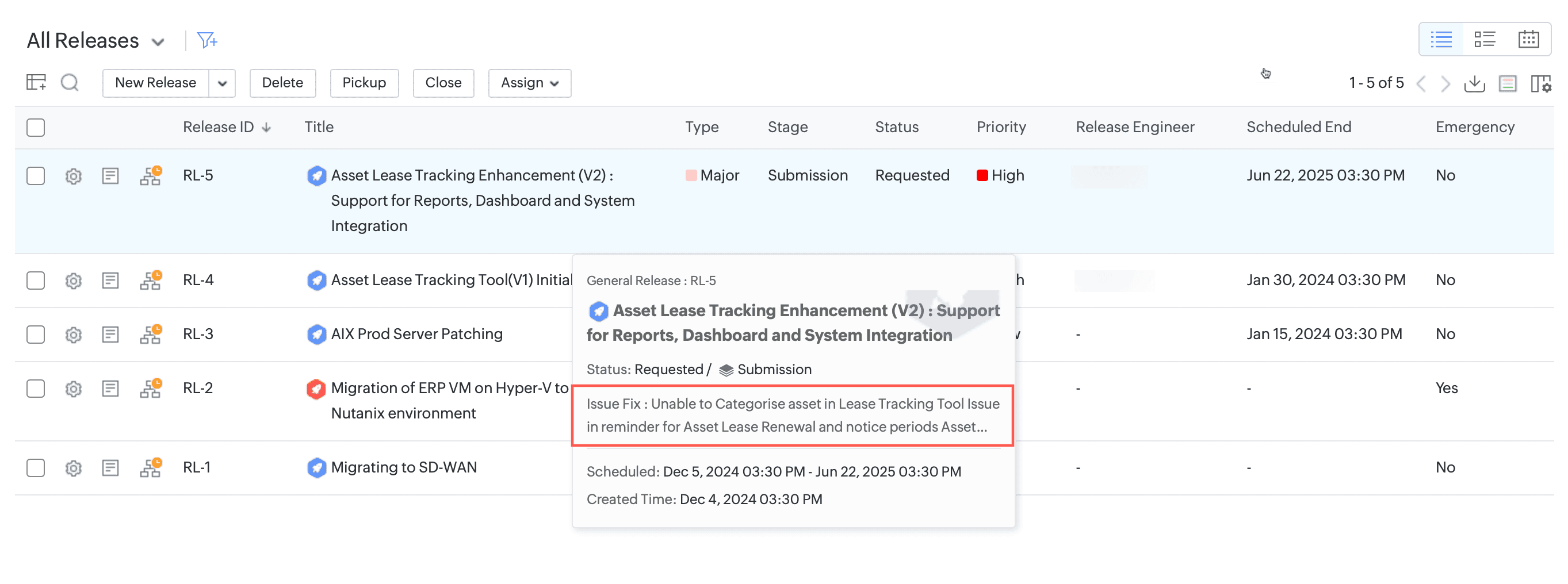
- Define color codes for releases list view and template view based on release attributes such as Stage, Type, Priority, Impact, Workflow, Template, and Risk.
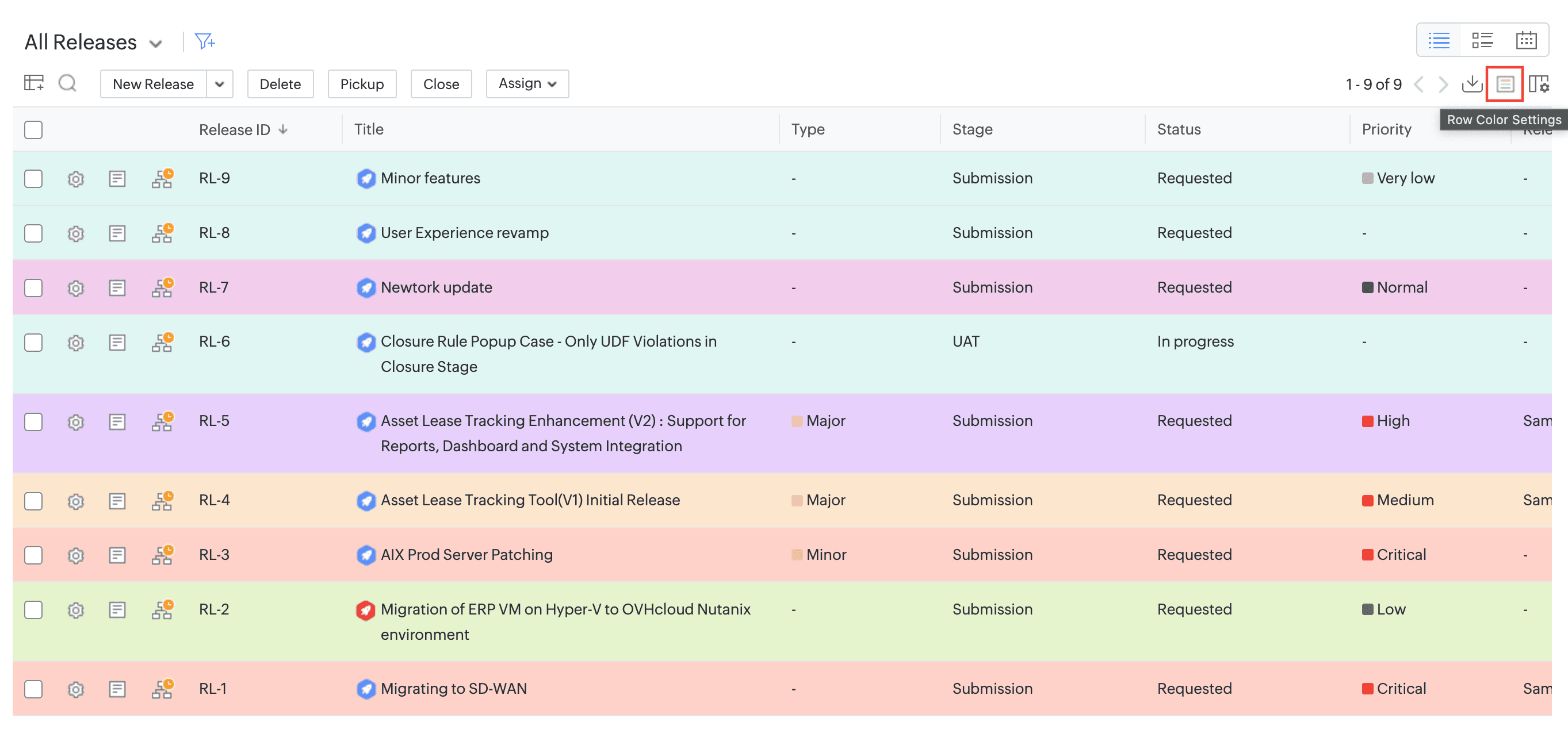
- A closure rule violation pop-up now displays mandatory properties when closing a release from the closure stage.
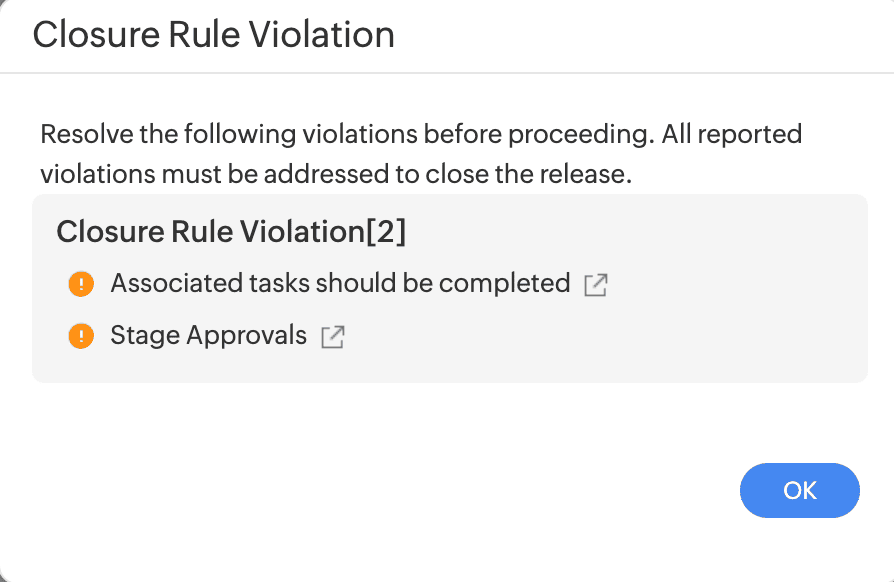
- You can now add Assets and CMDB modules as reference entities in release lookup fields.
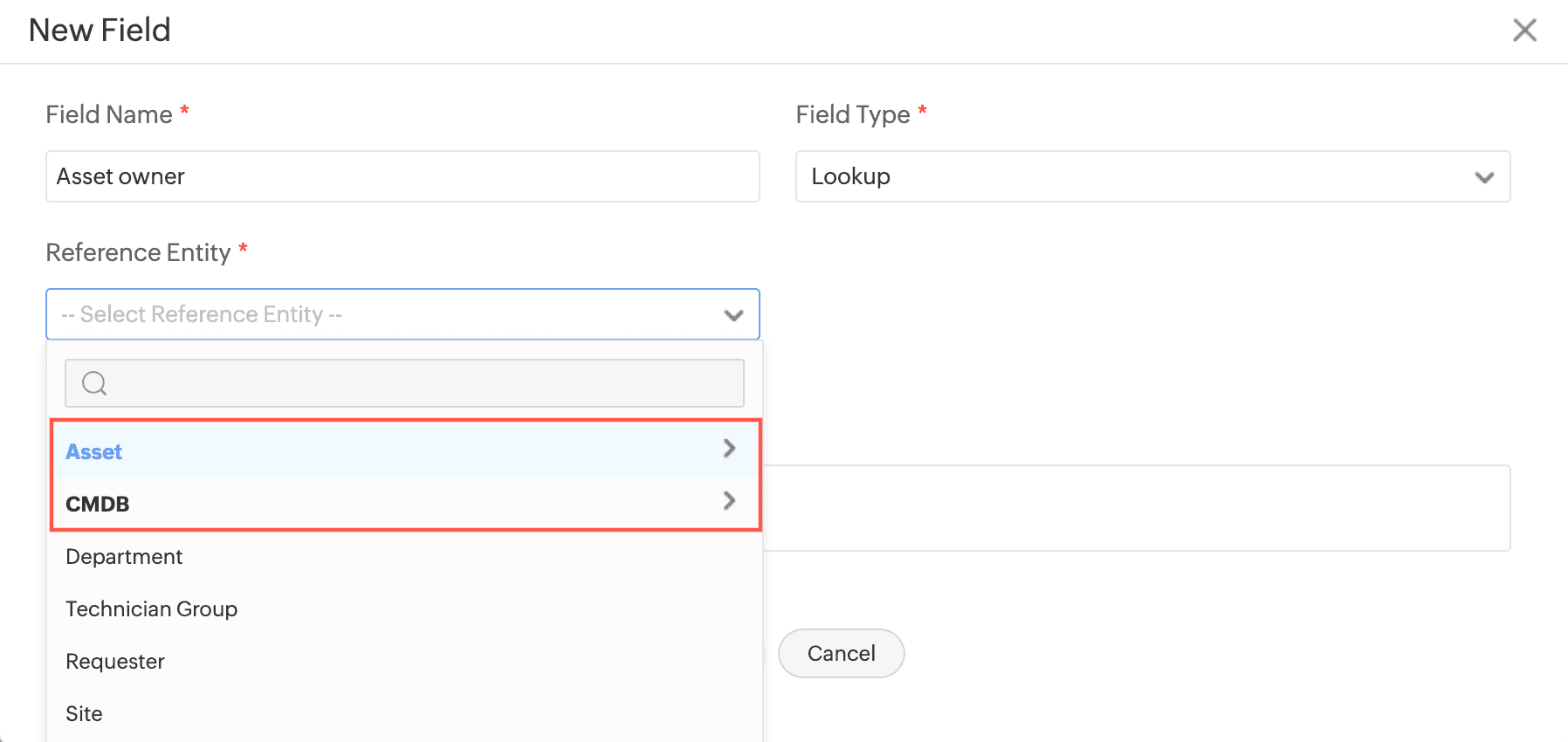
- You can now resend approved and rejected approvals when an approval level is pending, allowing users to resubmit approvals.
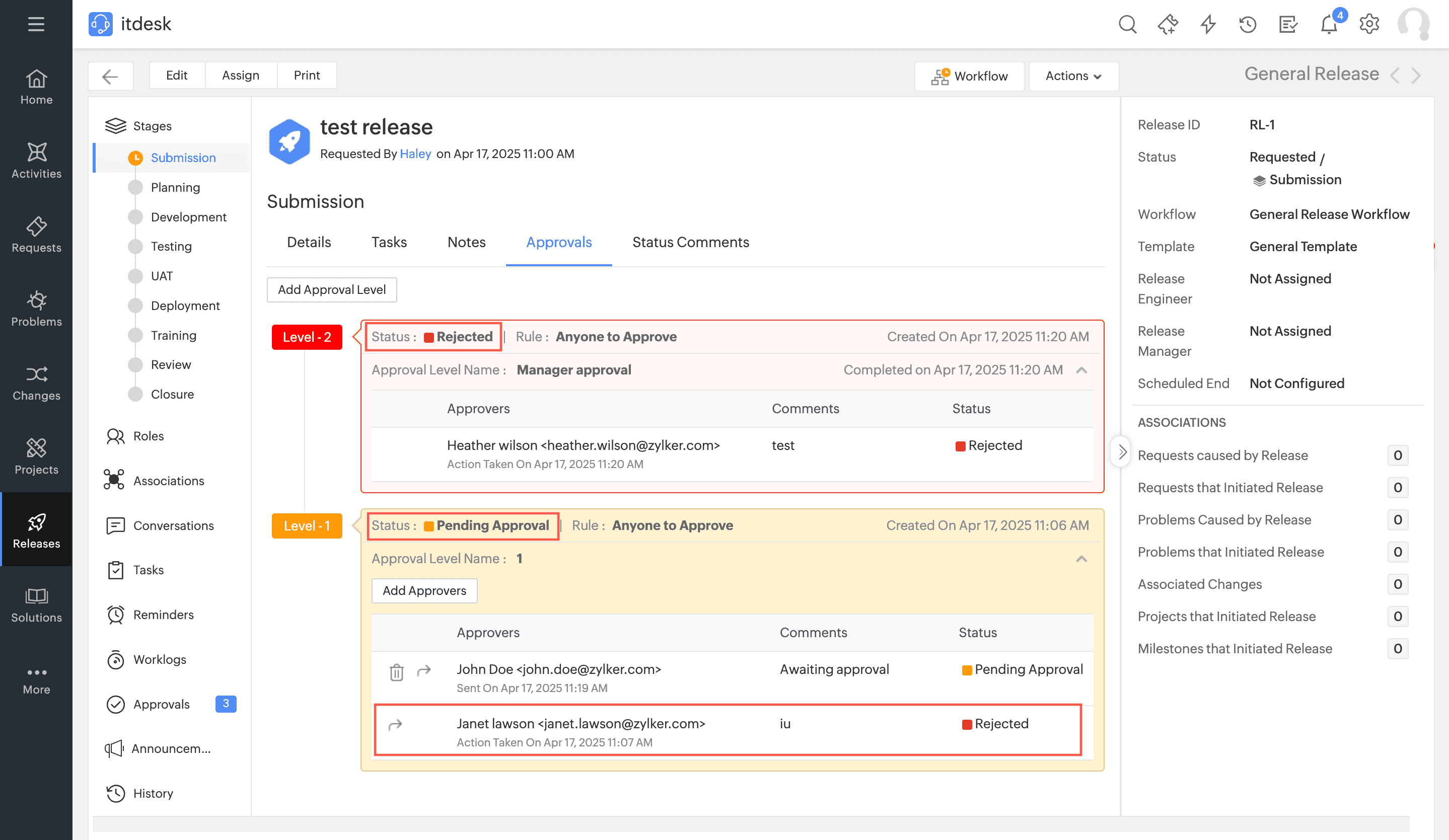
- You can now add Tasks to the print preview. This option is disabled by default.
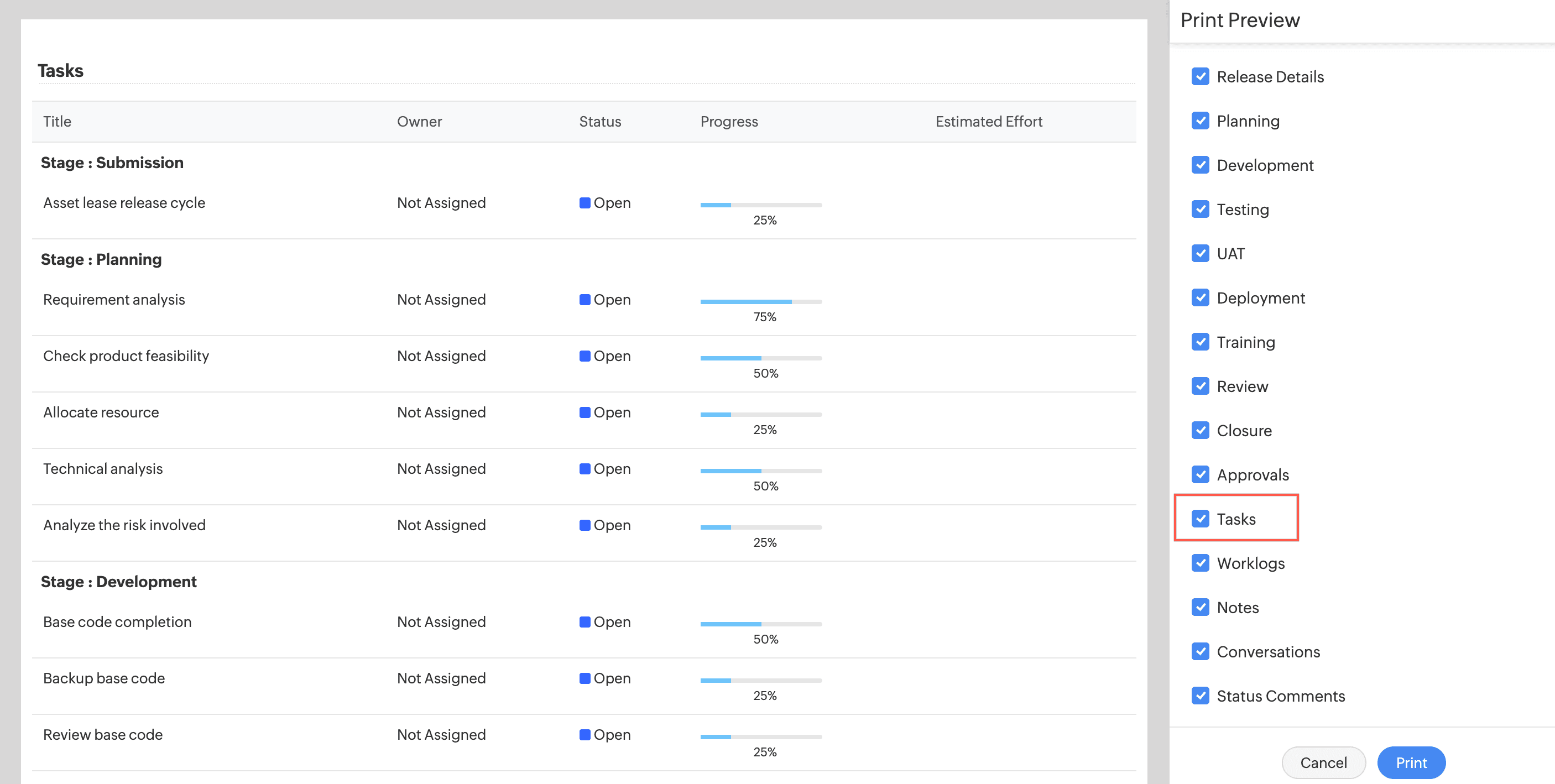
Assets
Asset Age Tracking
- In Assets, a new Age field has been introduced to display how long an asset has been in use within your organization.
- This field, when added to the template, will appear on the asset details page canvas and edit forms.
- By default, the field will appear on the right pane of the asset details page, even if the field is not added to the template.
- To add the field to the template,
- Open the All Assets product type template under Setup > Customization > Asset Management > Product Type and go to Fields.
- From the Available tab on the right pane, drag the Age field onto the canvas and save the template.

Note: You cannot add the age field to consumable templates.
- A new Configurations tab has been introduced under Setup > Customization > Asset Management where technicians with SDAdmin or AssetConfig role can configure how asset age must be calculated and displayed in the asset details page.
- Asset age can be calculated from acquisition date, asset record created date, or relevant Date/Time additional field in asset forms.
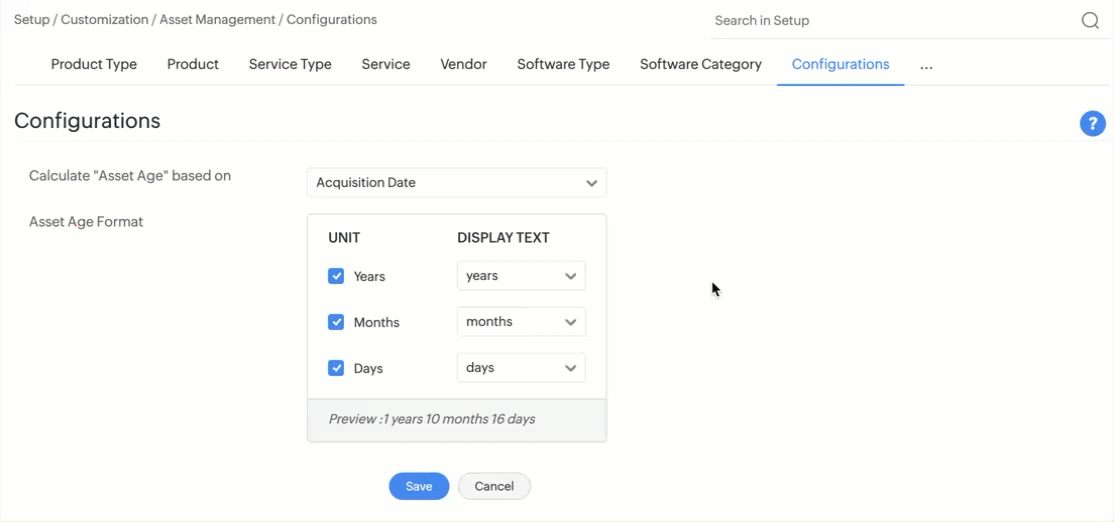
- Create a custom assets list view that filters and displays only assets of a specific age.

- Generate age-based asset reports by including the Age column and applying age criteria.
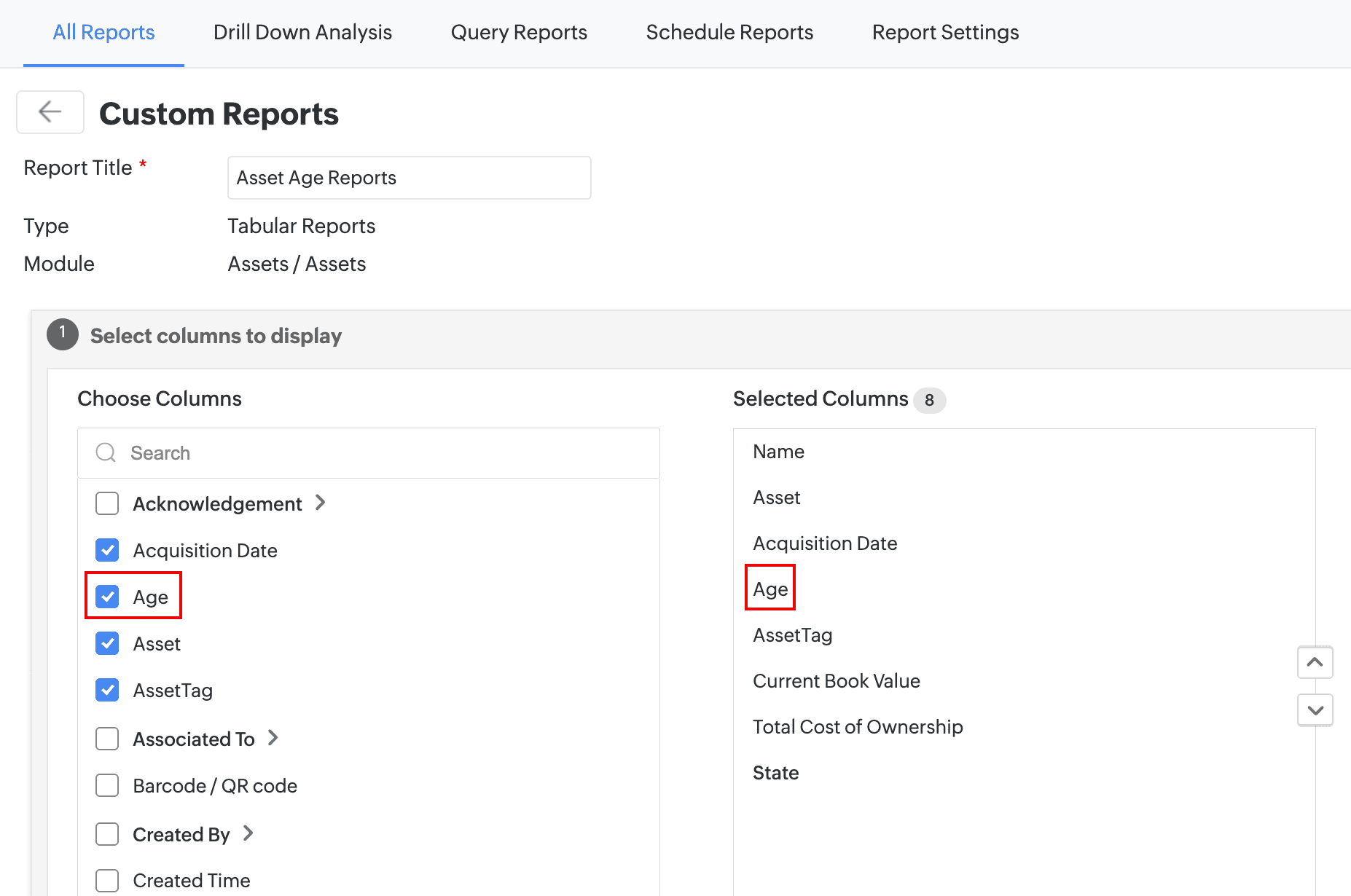

- Track assets in all product types across different age groups and monitor their life cycle trends by adding asset age widget to the dashboard.
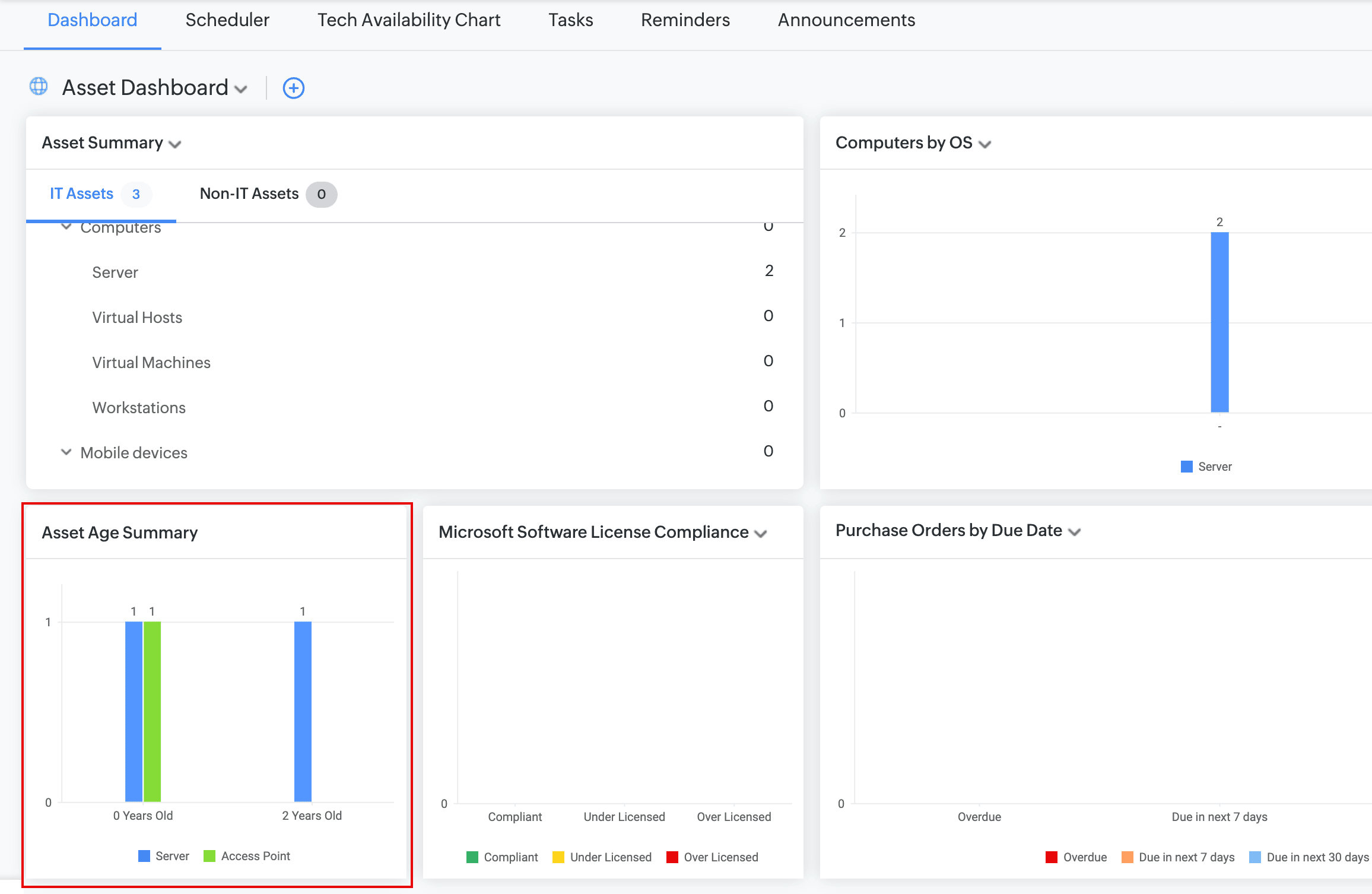
- For a computer product type-focussed summary, add the Computer Age Summary widget to the dashboard.
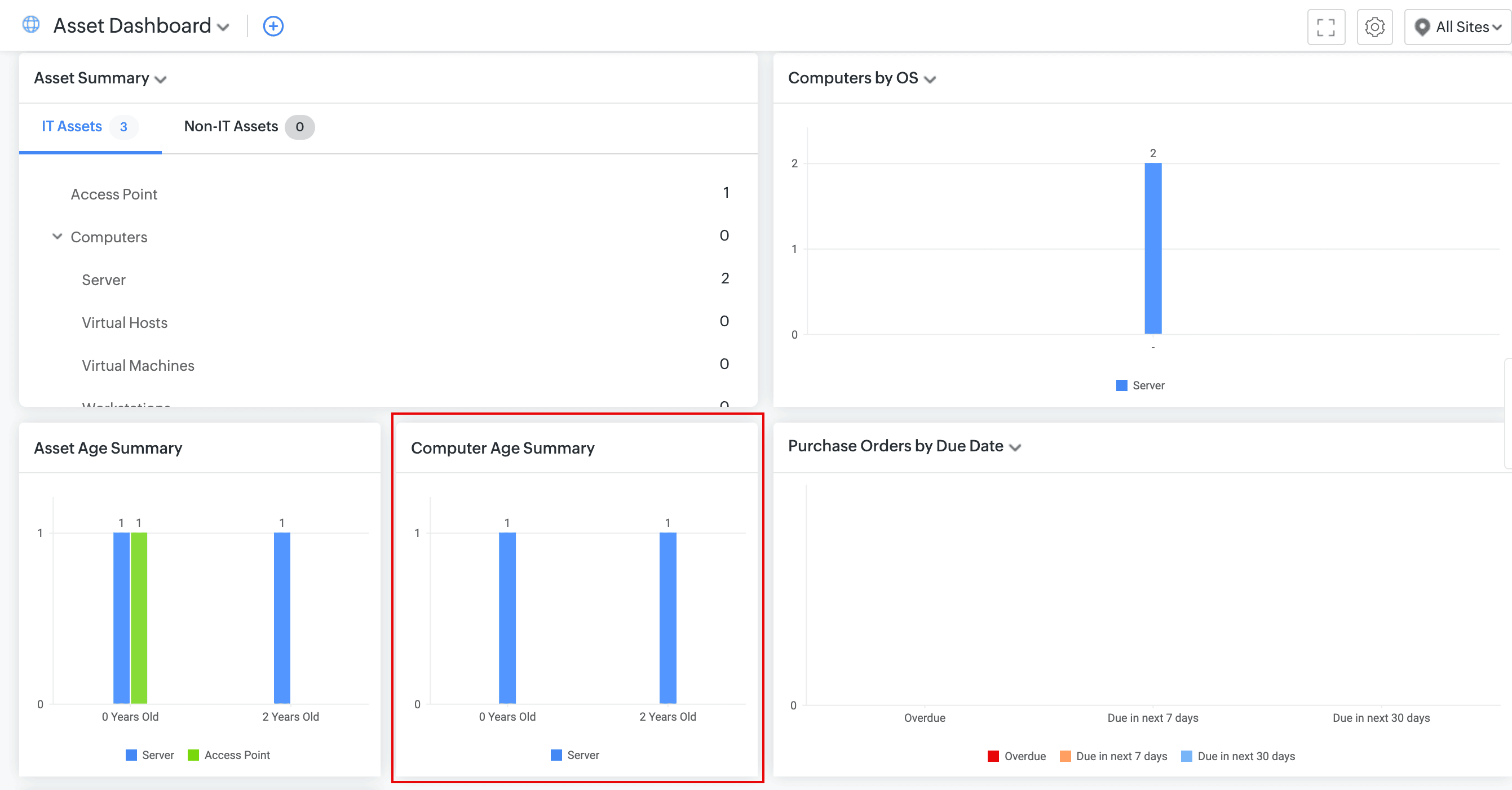
Reports
List View Enhancements
- To simplify report navigation, a new report filter drop-down has been introduced. Users can now filter and view specific reports from the complete list.
| Filter |
Description |
| All Reports |
Displays all reports |
| Custom Reports |
Displays reports generated by users |
| Query Reports |
Displays reports generated through query-based configurations |
| My Reports |
Displays reports created or owned by the logged-in user |
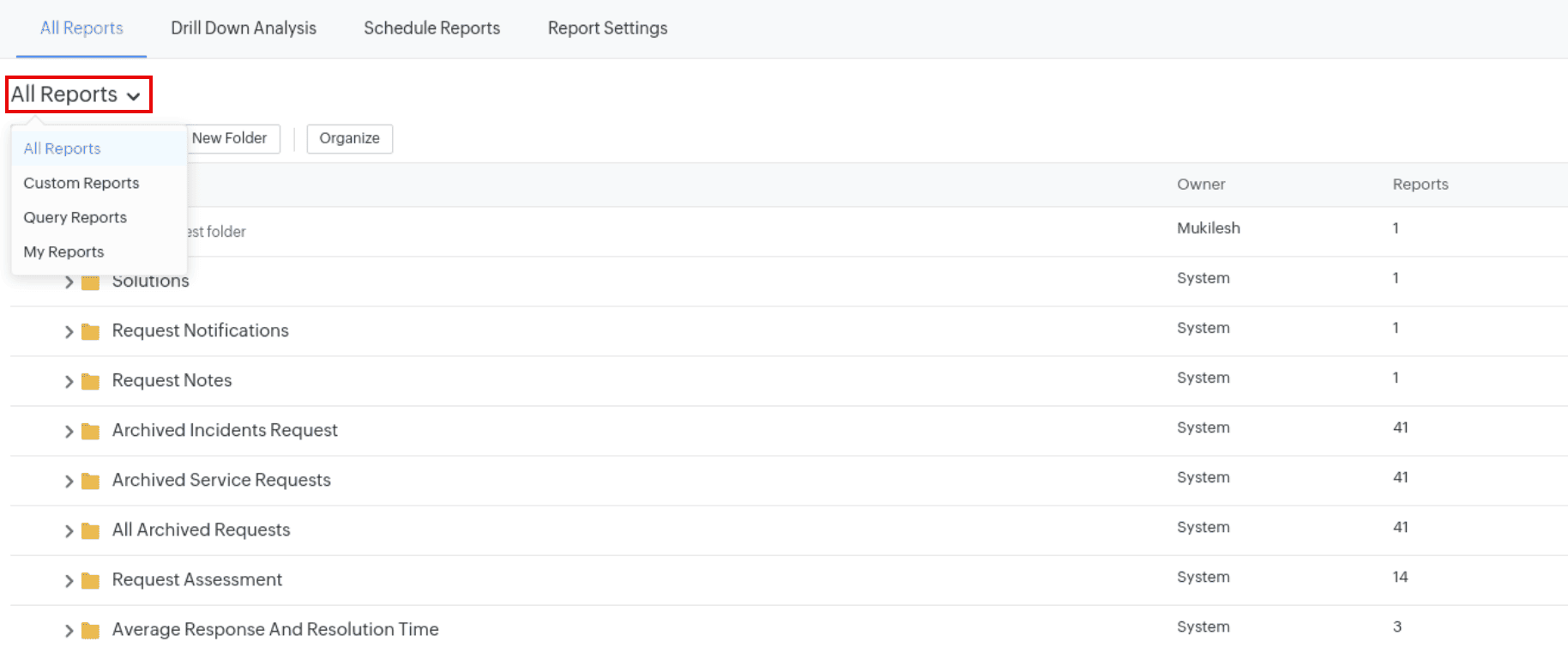
- Use the search bar to filter out a specific report or report folder. Selecting a report folder locates it in the list view, while selecting the report generates and displays the latest report.
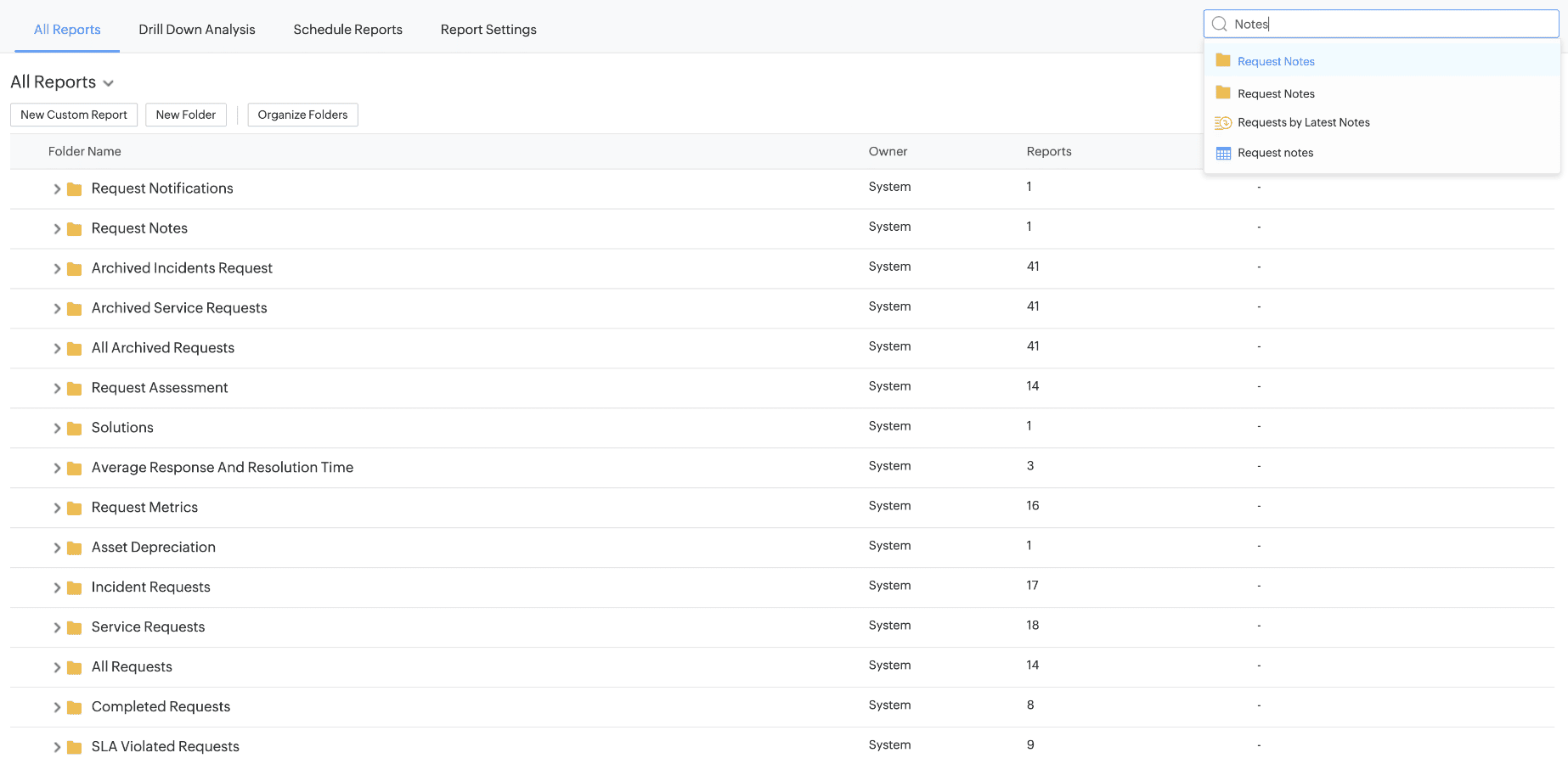
- Reorder report folders in the list view by clicking Organize Folder in the toolbar.
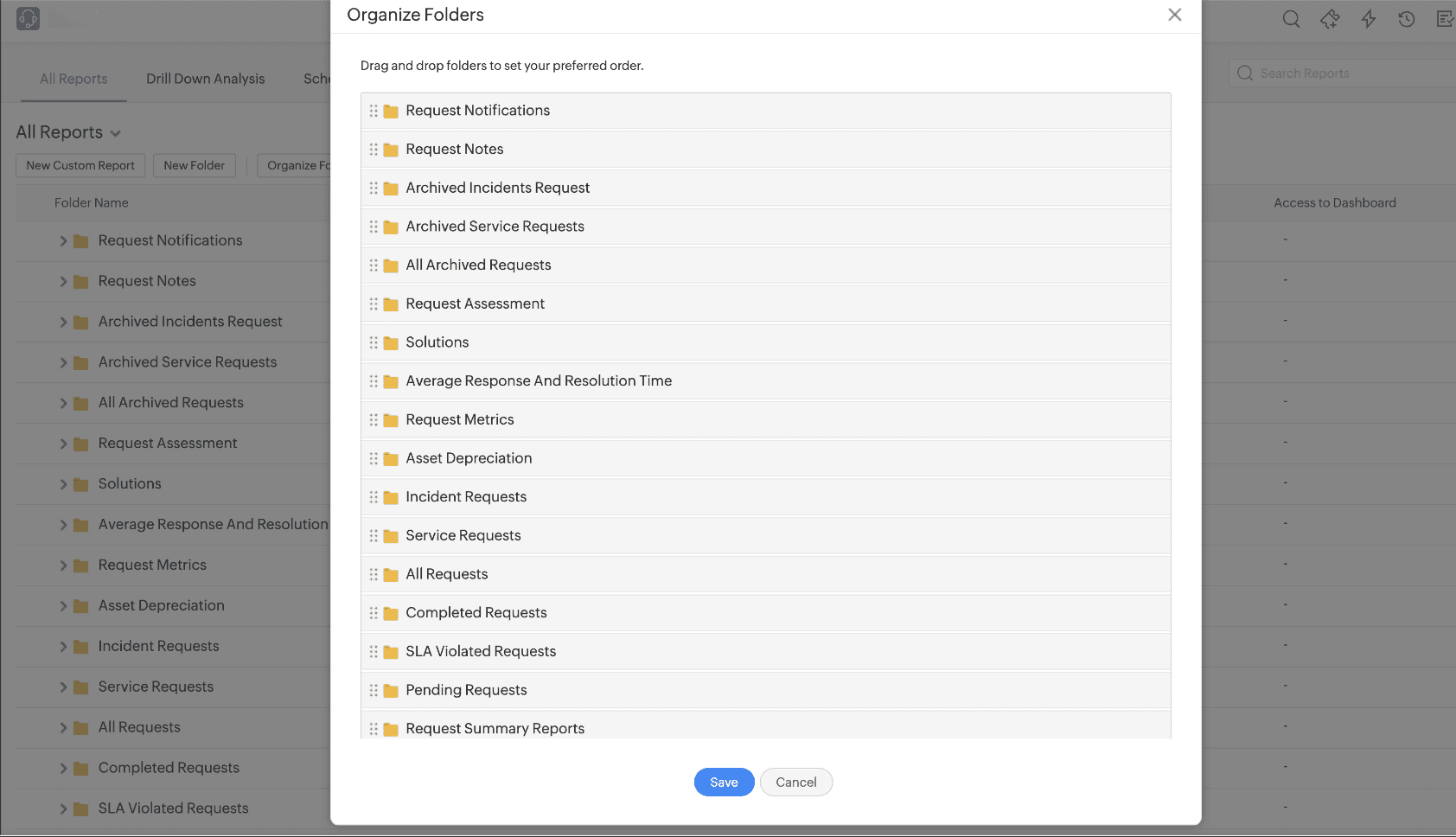
Wizard Enhancements
- In Filter Options,
- Report criteria now supports is empty and is not empty operators.
- New variables have been introduced for the following fields:
| Field |
Variables |
| Site |
- $Default site: Default site of your organization
- $Current user site: Site of the user generating the report
- $Current Technician Associated Sites: All sites associated with the technician generating the report
|
| Group |
- $Current Technician Associated Groups: All groups associated with the technician generating the report
|
| Department |
- $Current user department: Department of the user generating the report
|
| User |
- $System user: User created by the system automatically
- $Current user: User generating the report
|
- In Select Column to Group, you can now use Sort Order to display Order By field values in ascending or descending order within the report.
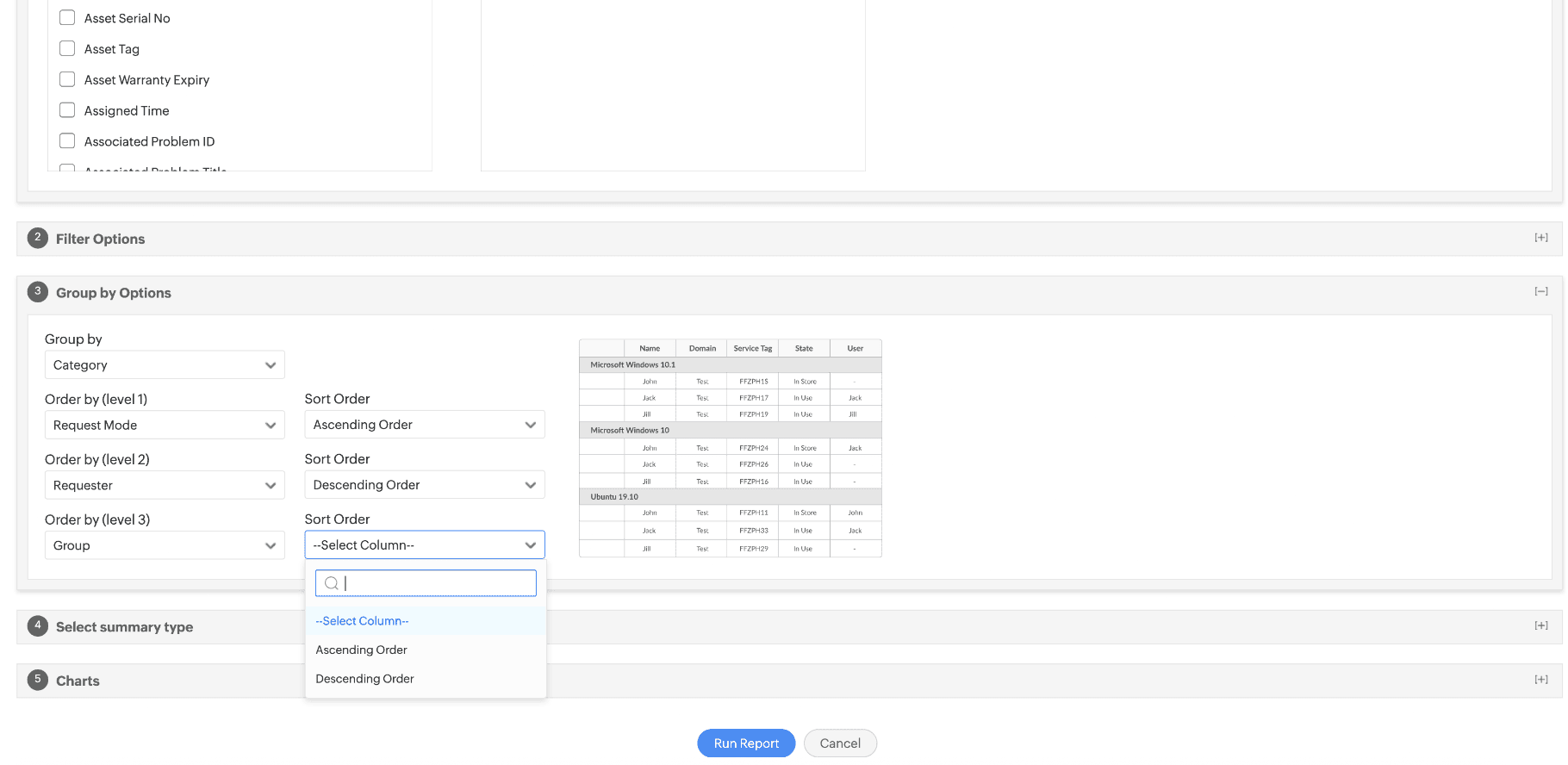
Behavior Change
Contract Expiry Notification
The Notify Before range in the Expiry Notification section of the Contract page has been increased from 365 days to 3,650 days, allowing for earlier contract expiry alerts.
